
& data security: your questions answered Infection control back to basics CPD Calendar Feb-May 2022 SUMMER 2021
Privacy
EDITOR
Dr Jay Hsing
EDITORIAL TEAM
Dr Matthew Nangle
Dr Gary Smith
Ms Lisa Rusten
Ms Jane Nettleton
PRODUCTION
Published by the Australian Dental Association (Queensland Branch)
CONTACT
22-26 Hamilton Place
Bowen Hills Qld 4006
PO Box 611, Albion Qld 4010
Phone: 07 3252 9866
Email: adaq@adaq.com.au
Website: adaq.org.au
ADVERTISING KIT
Information on advertising, deadlines and artwork specifications are available in the ADAQ Advertising Kit: adaq.org.au/advertising
GRAPHIC DESIGN LEAD
Kristen Willis, Tondo Creative
COVER ART DESIGN & GRAPHIC DESIGN SUPPORT
Emerson Domingo Jr
DISCLAIMER
ADAQ Dental Mirror is published for the information of Members only and is not for general distribution.
Copyright is reserved throughout. No part of this publication may be reproduced in part or whole without the written consent of the publisher. This publication is for the purpose of promoting matters of general interest to Members of the Association. The views expressed in this magazine do not necessarily reflect the views and policies of ADAQ or ADA. Publication of advertisements for products or services does not indicate endorsement by ADAQ. All material is positioned and published at the discretion of ADAQ.
ADAQ COUNCILLORS
PRESIDENT
Dr Matthew Nangle
SENIOR VICE PRESIDENT
Dr Jay Hsing
JUNIOR VICE PRESIDENT
Dr Kelly Hennessy
COUNCILLORS
Dr Kevin Ang (Peninsula) Dr Oleg Pushkarev (Western)
Dr Jiten Rao (Northern)
Dr Kaye Kendall (Moreton)
Dr Norah Ayad (Gold Coast)
FEDERAL COUNCILLORS
Dr Joseph Nguyen (Burnett)
Dr Keith Willis (Moreton)
Mr Andrew Waltho (Skills-based)
Dr Angie Nilsson Dr Martin Webb
IMMEDIATE PAST PRESIDENT
Associate Professor Alex Forrest AO
ADAQ SUB-BRANCHES
Bundaberg Dr Paul Dever Mackay Dr Peter Monckton Toowoomba Dr Rob Sivertsen
Ipswich Dr Andrew Wong Sunshine Coast Dr Peter Jorgensen Gold Coast Dr Roslyn Grant
Kingaroy

Dr Man Chun (Simon) Lee Gladstone Dr Patrick Dohring Rockhampton Dr Kelly Hennessy
Cairns
Dr Brian James
ADAQ COMMITTEES
Dental Practice Committee
Convener: Dr Matthew Nangle
Dental History
Preservation Committee
Convener: Dr Gary Smith
Oral Health Committee Convener: Dr Kaye Kendall
Conduct and Honours Committee
Convener: A/Prof Alex Forrest AO
Recent Graduates and Students Committee
Convener: Dr Malak Fouda
Volunteering in Dentistry Committee
Convener: Dr Jay Hsing
SUMMER 2021
04 From the President 08 COVER STORY New Pharma Regulations and QScript 10 Privacy and data security: your questions answered 12 Reprocessing area: back to basics 16 ADAQ events gallery 18 Annual Clinic Day 2021 19 ADAQ CPD Program: Feb-May 2022 23 2021 CPD survey results 24 Giving a smile: volunteer dentistry 28
SPOTLIGHT Smart software filling in the gaps 30
SPOTLIGHT Early career dentists 31 2021 ADAQ Awards recipients 36 Obituary: Dr Rom Denham
CONTENTS
MEMBER
MEMBER
FROM THE PRESIDENT
DR MATTHEW NANGLE
Colleagues, it is my honour and privilege to address you as the newly elected President of ADAQ.
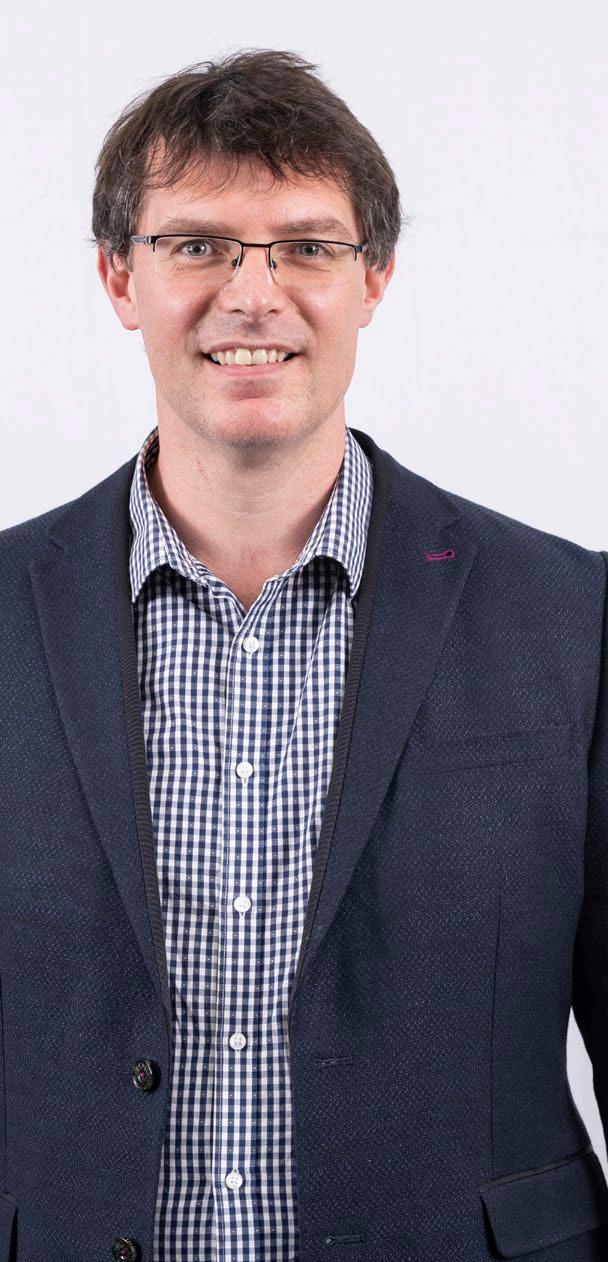
The Association has achieved an inordinate amount over the last few years in modernising its structure and governance as well as providing an array of new or refreshed services to enrich Members’ professional and personal lives. I will commit wholeheartedly to ensuring this success story continues and look forward to working with you all to advance the dental profession and underpinning its pivotal role in oral and general health for all Queenslanders.
A DYING BREED?
This may seem an odd opener, but I hope I am a President that is the last of their kind. I distinctly remember being approached by two senior members of the profession in 2017 and with a tap on the shoulder being asked to join ADAQ Council. There was nothing dishonest in this. At the time, Council was struggling to fill the eight available positions for the Moreton Division. I did not require to be elected to the position, because there was no contest. More’s the pity. However, in 2019 and in the recent election cycle, Members from my division were required to formally elect their representatives on Council. This is as it should be in a vibrant and dynamic professional association. I hope that soon we need to undertake such elections as a standard for all ADAQ’s geographical divisions, but this can only be so if the membership is engaged. I truly believe Member apathy is our greatest threat. Indeed, if you think there is more that can be done on this front, as ever, please feel free to make suggestions to myself or through your elected representatives. Many Councillors are continuing in their positions, and I am very grateful for the retention of corporate knowledge they bring, but I would like to especially welcome those new to Council: Drs Oleg Pushkarev (Western), Jiten Rao (Northern), and Kevin Ang (Peninsula). I look forward to receiving their new insights and counsel.
November, dental assistants, hygienists, therapists, technicians, prosthetists, and practice managers, have been able to access specific resources including discounted CPD, The Dental Mirror e-magazine, Member Assistance Program including counselling and competitive professional indemnity insurance rates. There will be resources that remain only to dentist Members, with dental team colleagues being required to access these on a userpays model, e.g., HR Hub, Pharma Advice, Lifestyle benefits, and ADAQ services such as our mentoring program, infection control resources, and practice resources. However, I believe that the broader availability of so many of our resources to all those in the dental profession is a major step forward in our engagement with dental team colleagues and truly cements our status as the peak professional body in dentistry.
The day after the article was released, I received a phone call from my future and current private practice boss, and after a brief lunch and chat, the rest was history. Perhaps there is a lesson there for some of you? Ultimately though, there are no hard and fast answers to landing the right job at the right time. Sure, be bold and be brave, but let evidence-based ethical dentistry be your guiding principle. If you do this, you will slowly perhaps but most surely build a strong patient base that is based on mutual respect and quality health care.
I look forward to working with you all to advance the dental profession
I want to update you on a few matters that Council has addressed specifically over the last few months.
DENTAL TEAM ACCESS
Council has recently approved extending ADAQ’s reach across the dental profession by permitting Members of the dental team access to our website and other select resources. From
The broader availability of so many of our resources to all those in the dental profession is a major step forward.
AWARDS
I would like to personally congratulate all recipients of awards conferred at the recent Council meeting and Annual General Meeting, with Life Membership, our highest category of award, being conferred upon Professor Ian Meyers, Associate Professor Peter Clark Ryan, and Dr Paul Renner, for their exceptionally distinguished service in dentistry over many decades. Congratulations also to Associate Professor Alex Moule on receiving Honorary Membership for a not dissimilar commitment to the profession. Special mention also goes to two recipients of the Service Medallion, both of whom have recently served as ADAQ Presidents, Dr Adrian Frick (2019) and Dr Norah Ayad (2020). I have had the pleasure of serving on ADAQ Council with them both, witnessing first-hand their extraordinary determination and talents in navigating the Association through some very difficult waters. I hope that I can continue to build and modernise our professional body in their manner, working closely with CEO Lisa Rusten and all ADAQ staff, with the support and guidance of Immediate Past President Associate Professor Alex Forrest and all of Council.
NEW GRADUATES
It is that time of year again when we welcome our newest colleagues to the fold. For those about to graduate, we salute you. It is a time of great excitement, but also some trepidation. I recall the first restorative procedure I undertook as a new graduate quite distinctly, as that first patient happened to also be my new boss! My hands were shaky, but I got the job done and the restoration is still there chugging along to this day. So how did I get the job? Was it my Grade Point Average? Nope. I had heeded the call to list my name in the Dental Mirror (then ADAQ News), along with only five others from my cohort. Never one to put all my eggs into one basket, I was the only student to have ticked the box requesting ‘part-time’ work.
For those about to graduate, we salute you. Be bold and be brave, but let evidence-based ethical dentistry be your guiding principle.
So, from day one ADAQ was looking after me, and I hadn’t even paid any fees yet. On this point, Council has recently agreed to permit new graduates’ extension on free professional indemnity insurance from 6 months out to a whopping 18 months. This is a generous deal that would be silly to miss out on. Arguably having the backing of ADA in your professional lives is more important now than perhaps any other stage of your career. So be sure to make use of the resources available to you now, and one day, when you have reached a level of confidence and comfort, perhaps give thought to what you can do to give back to the profession and support the next generation. For more information visit www.adaq.org.au/newgrads
COVID-19
I am sure that 2022 will bring many profession-specific challenges, but unfortunately the COVID-19 pandemic and its impact remains unpredictable for us all. Particularly with the emergence of the highly transmissible Delta-variant SARS-CoV-2 virus across many parts of Australia, Queensland will soon need to transition from a ‘COVID-zero’ approach, to ‘living with COVID’. Our best means of preparing is of course vaccination; I will be receiving my third jab before the year is out.
The ADA Infection Control Committee has published a document that replaces the ADA Restrictions Levels Framework .
In preparation, the ADA Infection Control Committee chaired by Professor Laurence Walsh has published a document that supplements existing COVID-19 guidelines but also replaces the ADA Restrictions Levels framework. The newly released Risk Management Principles for Dentistry covers application of
4 5 ADAQ DENTAL MIRROR SUMMER 2021
evidenced infection control measures within a broader risk-based approach. The ‘hierarchy of controls framework’ can be found below (Figure 1).
ON A PERSONAL NOTE
I would like to thank my wife, Julie, and my three children, Robbie, James, and Murray. Their support and humour continually help me traverse the fine line between hubris and humility. Certainly, I don’t expect the next year of my life to be easy, but it will certainly be easier because of them. I am also grateful to have the professional support of all staff at ADAQ. They are a motivated and efficient bunch. I think it is safe to say that both
the Immediate Past President and I are enormously grateful that the changes imposed by Council on the organisation and enacted by the CEO over the last few years have made the journey of Presidency an easier road to travel.
Finally, I have been approached recently by a few Members asking me what I intend to do for the Association as President. However, I find this to be a false narrative, as the position of President is not an autocratic one. I would flip this and ask what do you think we should be doing? Indeed, what do you intend to do? Have a think and let me know, because only then can I make a reasoned argument to Council. Please email me your thoughts – president@adaq.org.au
Clinical and epidemiological risks are considered and risk is eliminated by deferring care when appropriate
Facilities have been structured to reduce the risk of transmission
A risk management plan is in place and implemented by a trained team to minimise the risk of transmission

Standard precautions are supplemented by transmissionbased precautions as appropriate Graduates, we
The ‘things to do after graduation’ list can be long. So we’ve compiled it for you.


6 ADAQ DENTAL MIRROR SUMMER 2021
Facilities
Screening 3 Protocols & procedures 4 Personal Protective Equipment (PPE) & infection control
Figure 1. Application of the hierarchy of controls for COVID-19 risk management in dentistry. Source: Risk Management Principles for Dentistry During the COVID-19 Pandemic. Version 1, October 2021. ADA
2
1
can help you get started.
Read the full list on
to do before you can practice How your ADAQ Member benefits can make it easier
to get
with the industry adaq.com.au/newgrads
What
How
involved
NEW PHARMA REGULATIONS AND QSCRIPT
MR CHRIS MCGILL
ADAQ Compliance, Advice & Policy Team

On 27 September 2021, a new regulatory framework for medicines and poisons came into effect across Queensland. The new supporting legislation, the Medicines and Poisons (Medicines) Regulation 2021 (Qld), replaces the Health (Drugs and Poisons) Regulation 1996 (Qld) and effects significant changes to the use of medication in dentistry that all dental practitioners should be aware of.
Considering the numerous rules, regulations, and legislation surrounding the use of medication in dentistry, it can be difficult for dentists to stay on top of their obligations, and compliance issues associated with prescribing and administering medication in practice. As this is such an important part of dentistry, ADAQ have compiled a list of the key regulatory changes introduced in the new legislation along with some guidance on how to use the new QScript real-time prescription monitoring system in practice.
KEY REGULATORY CHANGES FOR DENTISTS MEDICATIONS
The treatment of dental pain can sometimes involve high-risk drugs of diversion. As a result, there has always been regulation surrounding dental practitioners’ ability to prescribe some medications to their patients.
To help distinguish different classes of drugs, the regulations have introduced new classes of drugs which include restricted medicines, high-risk medicines, diversion risk medicines, and monitored medicines. Complete lists of the medicines which
make up these categories are listed in the regulations. However, the only notable categories for dentistry are monitored medicines which are now captured by QScript, and high-risk medicines which are no longer able to be self-prescribed by any practitioner including dentists.
Under the new regulations, the Schedule 8 medicines that a dentist may prescribe and administer have been updated to reflect current therapeutic guidelines for the treatment of dental pain. A dentist may now prescribe up to 3 days’ supply (with no repeats) of the following Schedule 8 medicines, in their immediate release formulation: codeine, hydromorphone, morphine and oxycodone.
COMPLIANCE
A paper prescription that has been generated on a computer may not be amended once it has been printed. If an error is identified after a prescription has been printed, the error must be corrected in the prescribing software and a new prescription generated.
Section 225 of the new regulation also requires a prescriber to take all reasonable steps to keep secure any stationery used for prescribing. The penalty for non-compliance with this section is a fine of up to $5,514.00. We recommend all practitioners now keep all prescription pads and blank prescription forms in secure locations and in order to assist with managing this new compliance issue, take care not to over-order stock of prescription stationery.
QSCRIPT Q&A
The new regulatory framework introduces QScript, which is a read-only prescription monitoring system which intends to help dental practitioners identify high-risk clinical scenarios involving monitored medicines and reduce unintentional harms which may be caused by prescribing monitored medicines.
1. WHY IS QSCRIPT BEING IMPLEMENTED?
In 2018, the Commonwealth Department of Health proposed a national initiative for a real time prescription monitoring solution in collaboration with the states and territories. QScript is Queensland’s real-time prescription monitoring system implemented in accordance with the national initiative.
2. WHAT DO I NEED TO DO?
If you haven’t already, dentists need to register for QScript now by following the link sent to your Ahpra registered email address, or by heading to the QScript registration portal. (https://register.qscript.health.qld.gov.au/)
You will need your Ahpra registration number, prescriber number, email, and mobile phone number to set up an account. Each dentist in the practice needs to register, and this should only take about 5 minutes.
3. WHEN DO I NEED TO DO IT?
Now! From 28 October 2021 dentists are required to check QScript for patient records before:
1. prescribing a monitored medicine for a patient; or
2. giving a treatment dose of a monitored medicine to a patient.
4. WHAT MEDICINES ARE CAPTURED BY QSCRIPT?
QScript captures all medicines in the new category ‘monitored medicines’. Monitored medicines are all schedule 8 medications and the following schedule 4 medications including all:
• benzodiazepines;
• codeine;
• gabapentin;
• pregabalin;
• quetiapine;
• tramadol; and
• zopiclone.
These medications have been recognised by the legislation as requiring balance between the therapeutic need and the risk of causing patient harm.
5. HOW SHOULD I IMPLEMENT QSCRIPT INTO MY DAILY PRACTICE?
• Log into QScript each morning and set up your PIN for the day. Stay logged into QScript and review a patient’s history prior to prescribing or administering a monitored medicine.
• The PIN is valid for 12 hours. QScript uses multifactor authentication (MFA) so you will need your phone if this is how you use your MFA.
• You can use it on any device including your mobile, tablet or computer.
If you do not have clinical software, we recommend you bookmark the URL:
HP.QSCRIPT.HEALTH.QLD.GOV.AU
If you are unable to register or log in to QScript, technical support is available by contacting 13 S8INFO (13 78 46) and select option #2 for technical assistance.
6. HOW DO I USE QSCRIPT?
Upon reviewing a patient’s prescription history, QScript may provide a prompt to review a patient’s history of monitored medicines: these prompts are either RED, AMBER or GREEN.
Red: Red means you need to review the clinical history of the patient due to the patient’s previous history with monitored medicines. (Red does not mean you cannot supply or prescribe the medicine)
Amber: Amber means you need to review the clinical history of the patient and that a patient monitored medicine prescription history exists
Green: Green means no patient monitored medicine prescription history exists
7. ARE THERE PENALTIES FOR NON-COMPLIANCE?
Yes. However, during the initial rollout, Queensland Health’s focus will be on facilitating practitioners to get online and use the system.
Initially, practitioners will be advised of their legal requirements and be provided with information on how to register for and access QScript, if they haven’t already done so.
The Medicines and Poisons Act 2019 specifies penalties that can be imposed if health practitioners do not take reasonable steps to check QScript when required. There will be exceptions in some circumstances, including when treating patients in an emergency.
8 9 ADAQ DENTAL MIRROR SUMMER 2021
PRIVACY AND DATA SECURITY: YOUR QUESTIONS ANSWERED
MS LARISSA ALDERTON
ADAQ Compliance, Advice & Policy Team
The ADAQ Compliance, Advice and Policy team regularly receives queries around privacy, data security and data breaches. We have compiled some frequently asked questions that highlight your obligations as a dental practitioner and advice around what to do when things go wrong.
WHAT IS MY OBLIGATION AS A DENTIST WHEN IT COMES TO PRIVACY?
The Dental Board’s Code of Conduct notes the legal and ethical obligation for dental practitioners to protect the privacy of patients. In addition to the Code of Conduct, dental practitioners have additional legal obligations under other legislation such as the Privacy Act, Child Protection Act or Anti-discrimination Act.
The Privacy Act requires dental practitioners to have a privacy policy, that is available to the public on request. A privacy policy must explain:
• how personal information is collected, used and disclosed within the practice;
• how a patient may access and correct their information;
• how privacy complaints can be made and how the complaint will be dealt with; and
• whether information is likely to be disclosed overseas and, if so, where.
In addition to complying with the Privacy Act, you are also required to comply with your duties regarding patient confidentiality which also requires you to only use private information for the purpose it was received.
For example, it is likely a patient would reasonably expect you to share their clinical record amongst the treating health care team or for health service evaluation.
It should be noted that, when a patient enters into an agreement with their private health fund, at the time of entering this agreement, they consent to the health fund receiving their clinical records, upon request. Therefore, if you are faced with an audit from a health fund, you are permitted to provide a copy of the patient’s records to the health fund, as consent to produce the information has already been given by the patient.
The Privacy Act also allows you to disclose clinical records without the patient consent in an emergency or if there was an imminent threat of harm to a person.
The ADA Policy Statement 5.18 provides further details here: https://www.ada.org.au/Dental-Professionals/Policies/ThirdParties/5-18-Dentistry-Privacy-and-Confidentiality/privacy_ policy.aspx
DO EMAILS OR ELECTRONIC COMMUNICATIONS CONTAINING PERSONAL INFORMATION NEED TO BE PASSWORD PROTECTED?
If you maintain hard-copy files, your filing cabinets should be locked and kept in a room which is not accessible to the general public.
WHAT IS CONSIDERED A DATA BREACH?
A data breach happens when personal information is accessed or disclosed without authorisation or is lost.
Examples of common breaches include: loss of an electronic storage device, employees accessing personal information outside the scope of their employment, loss of paper records, sending a patient’s personal details to the wrong recipient, cyberattack or accidental disclosure.
If your practice believes a data breach has occurred which is likely to result in serious harm to an individual, the Privacy Act deems the breach an “eligible data breach” and requires you to prepare a statement for the Office of the Australian Information Commissioner (OAIC) detailing the breach and to notify the affected individuals. The OAIC notes ‘serious harm’ can include serious physical, psychological, emotional, financial, or reputational harm to an individual.
The OAIC received 539 data breach notifications between July and December 2020, which was 5% higher than the previous 6 months. The OAIC noted health service providers experienced the highest number of data breached and over half were a result of malicious or criminal attack.
WHAT CAN HAPPEN TO ME IF I DON’T REPORT AN ELIGIBLE DATA BREACH?
The OAIC warns of fines up to $2.1 million for failure to comply with the Eligible Data Breach scheme. There is also a risk that a breach to patient privacy and confidentiality will result in a report to Ahpra and the OAIC.
HOW CAN I PREVENT A DATA BREACH?
• Have a robust practice data and information management plan in place
• Educate staff around privacy and cyber security issues
• Ensure passwords and credentials are strong and protected
• Use multi-factor authentication
• Monitor for unusual account activity
• Have sufficient anti-virus protection in place
In addition to complying with the Privacy Act, you are also required to comply with your duties regarding patient confidentiality
WHEN CAN I DISCLOSE CLINICAL RECORDS OF MY PATIENT?
Other than in exceptional circumstances (which are permitted or required by law), clinical records should not, without the patient’s express written consent, be disclosed to anyone, unless the patient would reasonably expect the disclosure to take place.
Australian privacy laws currently do not mandate the use of password protection, or the encryption of emails. However, we note some public health agencies have introduced ‘internal policies’ requiring password protection of health information when sending information externally. If your patient consents, in writing, to receiving a copy of their clinical records by email, then you are permitted to send the records in this manner.
HOW SHOULD I STORE PATIENT RECORDS?
Dental practitioners must take reasonable steps to protect the personal information they hold. Therefore, your clinical records need to be stored securely to prevent unlawful access, modification, use or disclosure. If you secure your clinical records electronically, then we recommend the files be password protected to ensure security. Further, other security measures you should consider include screen visibility limited to staff members only, automatic log offs, log file/electronic audit trails, firewalls, malware and virus protection and considering the encryption of data for high-risk transmissions.
The OAIC warns of fines up to $2.1 million for failure to complywith the Eligible Data Breach scheme.
WHAT SHOULD I DO IF I SUSPECT A DATA BREACH?
The OAIC provide steps on how to respond to a data breach with the key actions being: identify, contain, assess, notify and review. The ADA have developed a Data Breach Response plan for Members based on these required steps that can be accessed here: https://www.ada.org.au/News-Media/News-and-Release/ Latest-News/Are-you-ready-for-the-mandatory-data-breachnotifi.This Plan provides guidance for Members who know or suspect a data breach has occurred.
There is also a risk that a breach to patient privacy and confidentiality will result in a report to Ahpra and the OAIC.
WHERE CAN I GET MORE INFORMATION?
The OAIC provide information, resources and an online form to report a data breach here: https://www.oaic.gov.au/privacy/ notifiable-data-breaches
THE ADA PROVIDES MEMBERS WITH INFORMATION AND PRACTICE RESOURCES HERE: WWW.ADA.ORG.AU/DATA
You can also contact the ADAQ Compliance, Advice and Policy team for further information and assistance on 07 3252 9866 or via email at assist@adaq.com.au.
10 11 ADAQ DENTAL MIRROR SUMMER 2021
REPROCESSING AREA: BACK TO BASICS
DAVINA BARKER
ADAQ Training and Practice Consultancy Services
When running a busy dental practice, we are often inclined to overlook one of the most important areas of the clinicinstrument reprocessing.
Due to the busy nature of our practices these days, it is imperative that we evaluate the infection control processes and procedures that we have implemented to ensure their efficacy and compliance with the relevant guidelines and standards.
As the year winds down, it provides the perfect opportunity to review the instrument reprocessing area in your dental practice with the help of the ADA Self-assessment Tool for Infection Control on the ADAQ website, and the August 2021 4th edition of the ADA Guidelines for Infection Prevention and Control.
Infection control and instrument reprocessing duties lie with the dental assistant and clinical support staff; however, dental practitioners must maintain responsibility under current ADA Infection Control Guidelines and the Dental Board Guidelines. The latter are currently under review.
The Dental Board of Australia stipulates dental practitioners must ensure that the premises in which they practise are kept in a clean and hygienic state to prevent or minimise the spread of infectious diseases and that, in attending to a patient, they take such steps as are practicable to prevent or minimise the spread of infectious diseases.
WORKFLOW OF INSTRUMENT REPROCESSING AREA
There must be a clearly designated directional flow of instruments through each zone of the sterilising room, with one-way traffic of instruments.
There must be clearly defined areas to receive dirty instruments, perform routine mechanical cleaning of items, rinse items, lubricate handpieces, and for drying, wrapping and bagging instruments.
Dirty and clean areas must be clearly identified. A good idea is to use appropriate signage, which assists in avoiding cross contamination of these
areas. Signs should be laminated for each zone e.g. dirty, packing, clean.
In order to minimise the risk of sharps injury during instrument handling, the sterilising room should have adequate lighting and magnification to enable proper inspection of cleaned instruments.
In order to facilitate cleaning, work surfaces should be smooth, without crevices, and made of non-porous materials such as stainless steel or laminate. There must be no inaccessible areas where moisture or soil can accumulate. Work benches must be of a standard height, and storage cupboards located at heights to minimise bending over or stretching overhead. Flooring should be non-slip, water-impervious and readily cleanable. Both hot and cold water taps in the instrument reprocessing area should be ideally non-touch and sinks deep enough to avoid frequent splashing onto the bench.
See Figure 1 for suggested workflow layout for reprocessing area in line with the recommendations in the AS/NZS 4815:2006.
CONTAMINATED ZONE
This area will include the ultrasonic cleaner, the lubricating system for handpieces, and deep sinks fitted with anti-splash devices (such as aerators on the taps) for rinsing items and for performing manual cleaning on the few items that are not cleaned mechanically (e.g. in an ultrasonic cleaner, instrument washer, or washer-disinfector).
Single-use items need to be discarded chairside and never reprocessed or reused. Instruments and items for reprocessing should be transported from the clinic to the sterilising room in a closed container or tray with a secure lid. Dirty instruments will be received here and sorted into each category for cleaning (manual or mechanical).
CONTAMINATED ZONEMANUAL CLEANING VERSUS MECHANICAL CLEANING
Manual cleaning is discouraged wherever mechanical cleaning can be used. It is not necessary to hand scrub instruments before they are placed into an ultrasonic cleaner or into an instrument washer/ washer disinfector. Mechanical cleaning is preferred to manual cleaning as it

is more efficient and reduces the risk of penetrating skin injuries from sharp instruments. Cleaning brushes used for manual cleaning of instruments must be washed, rinsed and stored dry. A wire bur brush, maintained in good condition may be used for cleaning tungsten carbide and diamond burs. Common household domestic detergents must not be used for manual instrument cleaning in dental practice as they are high foaming which impairs the visibility of instruments. They also leave residues after cleaning.
In the wet area/dirty area of the sterilisation area an additional water resistant apron should be worn and kept on the dirty side.
CONTAMINATED ZONEINSPECTION
Instruments should be checked visually under good lighting to ensure contaminants/soil have been removed. Damaged or rusted instruments must be repaired or discarded, and those with visible contamination/soil must be recleaned. Instruments and items that are not clean will compromise the sterilisation process.
CONTAMINATED ZONEPACKING AREA FOR INSTRUMENTS
Prior to packaging, instruments must be dried thoroughly. Suitable methods include use of a drying cabinet, low lint disposable or lint-free cloth, and a short rinse in very hot water. After drying the instruments thoroughly, they must be inspected for debris carefully under good lighting and ideally magnification prior to packaging and steam sterilisation.
When bagging instruments with hinges or ratchets, ensure these remain open and unlocked. Sharp instruments should be packaged in such a way that prevents perforation of the pack.
Packs or bags must be sealed prior to processing with adhesive strips and should be approximately 2/3 full when packing with items or instruments.
When bagging instruments with a handle, such as extraction forceps, they should be placed in handle first. This ensures that critical instruments can be removed using an aseptic technique.
Sterilisation pouches should be kept in their original packaging when being stored in cupboards. Pouches that are required
for daily use may be kept in plastic holders/brochure holders on the bench or wall above the packing area.
Packs and pouches to be sterilised by steam are to be marked with the processing date, batch number and steriliser identification. This can be done with an adhesive label or ink stamp, or by using an appropriate marker with waterinsoluble ink.
CONTAMINATED ZONE
LABELLING OF CRITICAL INSTRUMENTS READY FOR LOADING INTO THE STERILISER
The purpose of a BCI is to identify patients who have a procedure using sterile reusable medical instruments and devices and link this back to the sterilising records. Hence, dental practices must include, in the patients notes, a record of where individual instruments or instrument sets have been used for a surgical procedure or in a critical site.
BCI is required for critical instruments that may enter or penetrate sterile tissue or the bloodstream. Examples include:
• implants
• extractions
• periodontal treatment
• endodontic treatment
Sterilizer cycle information that is recorded must include:
• batch number(s),
• contents of the load (and if wrapped or unwrapped),
• date and time of starting the cycle,
• type of cycle used,
• name of the loading operator
• results of physical indicators (printouts)
• results of chemical indicators for the cycle (external as well as visible internal indicators)
• a check that packaged items are free of damage, the seals are intact along their length, and the packages are dry
• the name of the operator responsible for the release of the item or sets of items for use.
Download the Steriliser Cycle Record book on this page (under the Infection Control Templates section): https://adaq.org.au/ Web/My_ADAQ/Member_Resources/ infection_control_resources.aspx
CLEAN ZONE
This area will have the cooling racks for packages, and a storage area for supplies and sterile instruments. This area needs to be free from splatter to avoid contamination.
CLEAN ZONE- COOLING AREA FOR STERILE INSTRUMENTS
Sterilized packages must be allowed to cool away from the hand hygiene sink. Cooling items must not be placed on solid surfaces since condensation of vapour inside the pack may result. Cooling racks are best practice.
Packaged instruments should then be stored in closed cupboards or drawers to avoid environmental contamination from splatter and aerosols.
CLEAN ZONE- STORAGE OF PROCESSED INSTRUMENTS
Storage areas for wrapped sterilised instruments must be dedicated to this purpose only and must be kept free of dust, insects, and vermin. Ideally, wrapped sterilised instruments will be stored in enclosures (such as drawers or cupboards) that prevent the occurrence of environmental contamination.
CLEAN ZONE - HAND HYGIENE SINK
Handwashing must only occur in the dedicated separate basin for handwashing, and not in the sinks used for instrument reprocessing. Hand hygiene signs that are laminated placed above the sink are the best way to indicate a hand washing sink. Hand hygiene products need to be approved by the TGA for use as a hand hygiene product in a healthcare setting.
PPE IN THE INSTRUMENT REPROCESSING AREA
PPE in the reprocessing area including heavy duty gloves, eye protection and masks must be worn when rinsing items and when performing manual cleaning. A waterproof gown/apron is also recommended when splashing is anticipated. Wearing a hair net is recommended when packing instruments to prevent any shed hair falling onto the work area.
REFERENCE
1. ADA Infection Prevention and Control Guidelines 4th Edition, August 2021.
12 13 ADAQ DENTAL MIRROR SUMMER 2021
Figure 1. Reproduced from Cleaning, Disinfection, Sterilisation. A Guide for Office-Based Practice Lochead, L (2004) from the ADA Infection Control Manual Template

Proper
infection
control doesn’t just protect people.
It protects your practice too. Improper infection control can shut down practices. Keep infection down, and your practice up. ADAQ.COM.AU/INFECTIONCONTROL
Introducing Dental Team Access
Members of the dental team can now gain access to relevant ADAQ services & resources.
We recognise that you rely on your team members everyday – so it only makes sense to give them access to important resources and services.
Relevant ADAQ services and resources will be open to team members of ADAQ Members, including dental prosthetists, oral health therapists, dental therapists, dental hygienists, dental technicians, practice managers, and dental assistants.

PRACTICE ADVISORY SERVICES
Learn more at adaq.org.au/dentalteam
Discounted, brand new CPD Courses Regular ADAQ communications Practical wellness resources PI Insurance Regulatory advice for insurance customers Electronic subscription to Dental Mirror Magazine Access to private Facebook group COVID-19 resources
ADAQ EVENTS GALLERY
DENTAL TOPICS
IN THE TROPICSCAIRNS CONFERENCE






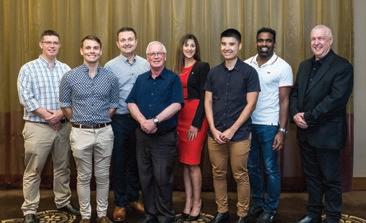




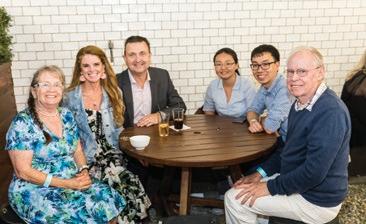
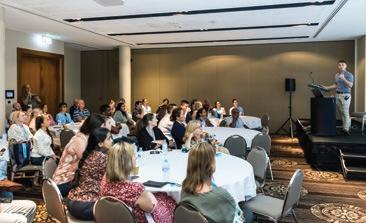


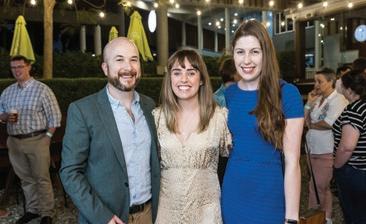

ENDODONTICS 101DR JONATHAN MOORE
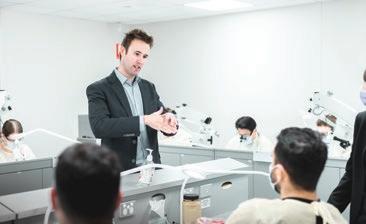




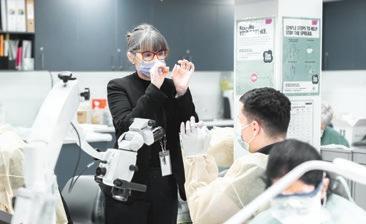
PULPOTOMIES AND STAINLESS STEEL CROWNS - DR SOBIA ZAFAR

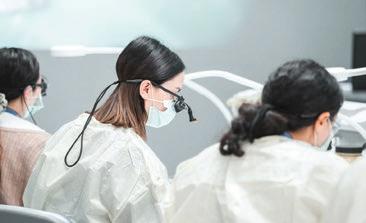


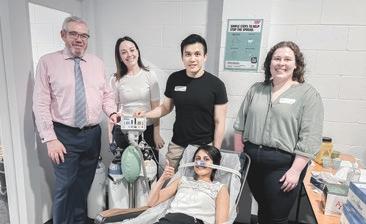
RELATIVE ANALGESIAPROF NIGEL ROBB
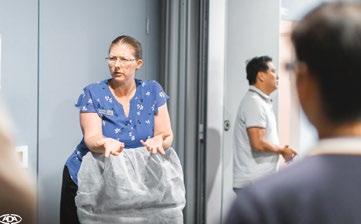

TMJ - CRANIOFACIAL PAIN AND DYSFUNCTIONDR ADAM TEO
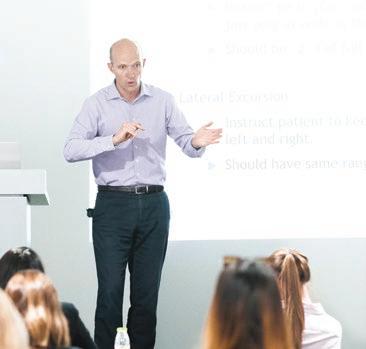
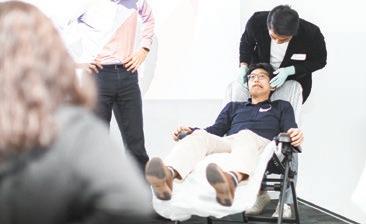
16 17 ADAQ DENTAL MIRROR SUMMER 2021
ADAQ ANNUAL CLINIC DAY 2021
On 26 November 2021, 132 delegates from all over Queensland gathered to hear from leading speakers on digital techniques and systems that are changing dentistry, and how these can be applied to their practice.
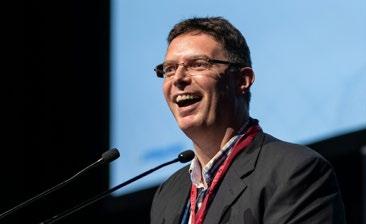


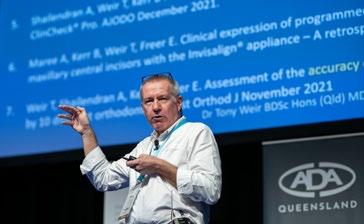

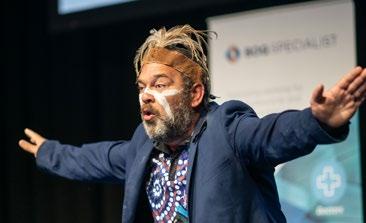


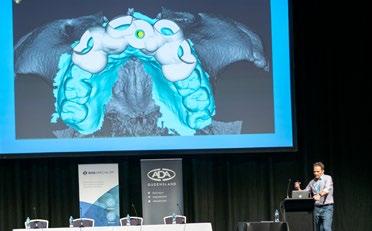
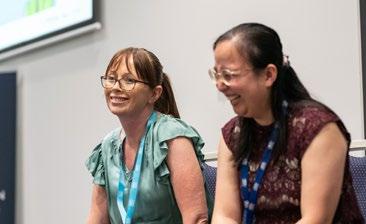
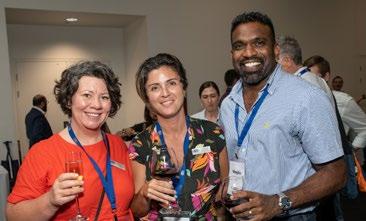




ADAQ CPD Program
Lectures and hands-on courses on topics relevant to every practitioner.


18 ADAQ DENTAL MIRROR
FEB - MAY 2022
adaq.org.au/cpd
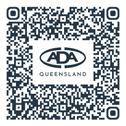


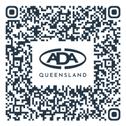


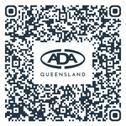
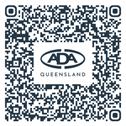
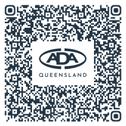
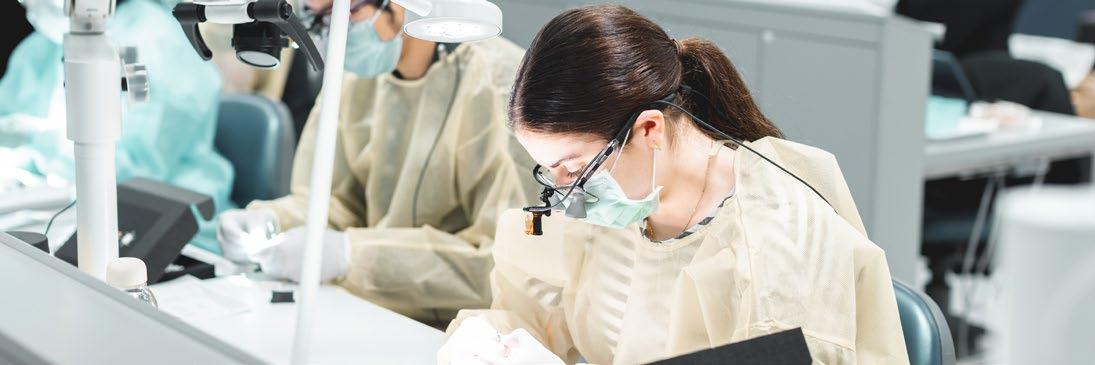
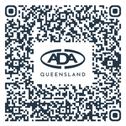
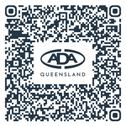


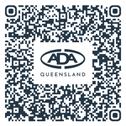
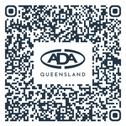


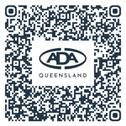
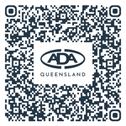
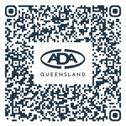
Evening Bite: Recession Coverage NEW DR MARINA KAMEL 9 SCAN TO LEARN MORE Oral Health Challenges - Geriatric & Special Needs Patients NEW DR MATTHEW NANGLE, DR LYDIA SEE, DR DAVID FU, MS TAMATHA HEAD, MS BELINDA MARSH 11 SCAN TO LEARN MORE Stage 1: Introduction to Oral Surgery A/PROF ANTHONY LYNHAM DR EDWARD HSU 4 SCAN TO LEARN MORE First Aid and CPR Upgrade BLS FIRST AID TRAINING 5 SCAN TO LEARN MORE Infection Control Fundamentals NEW MS SUE SANDLES 16 SCAN TO LEARN MORE Getting the most from eMax NEW DR MICHAEL MANDIKOS 18 SCAN TO LEARN MORE Extra-Oral Radiography and Cone Beam PreLicensing Course EMERITUS PROF PAUL MONSOUR 12 SCAN TO LEARN MORE Laser Training: PreLicensing Course EMERITUS PROF LAURIE WALSH AO 11 SCAN TO LEARN MORE Understanding Numbers, Benchmarking and Practice Improvement ALBERT GIGL 23 SCAN TO LEARN MORE Botulinum Toxin and Intraoral Dermal FillersTherapeutic Use DR MAHMOUD BAKR, DR MOHAMMED MEER & NEESHA PIERCE 19 SCAN TO LEARN MORE Anxiety Control in Dentistry DR STEVEN PARKER 19 SCAN TO LEARN MORE Recent Developments in Infection Control EMERITUS PROF LAURIE WALSH AO, MS DAVINA BARKER 4 SCAN TO LEARN MORE 4 Medical EmergenciesTownsville DR GREG MAHONEY SCAN TO LEARN MORE Effective Record Keeping DR ELIZABETH MILFORD 12 SCAN TO LEARN MORE Pulpotomies and Stainless-Steel Crowns DR SOBIA ZAFAR 11 SCAN TO LEARN MORE Masterclass in Oral Pathology NEW DR SARAH CHAW, DR NEIL SAVAGE & DR MARYAM JESSRI 5 SCAN TO LEARN MORE Relative AnalgesiaTownsville DR GREG MAHONEY 5 SCAN TO LEARN MORE Stage 2: Intermediate Oral Surgery A/PROF ANTHONY LYNHAM DR EDWARD HSU 18 SCAN TO LEARN MORE Dental Ergonomics MS LIBBY MASON 26 SCAN TO LEARN MORE Restoring the Worn or Broken Dentition PROF IAN MEYERS OAM 30 SCAN TO LEARN MORE February ADAQ CPD CALENDAR FEB - MAY 2022 March ADAQ CPD CALENDAR FEB - MAY 2022





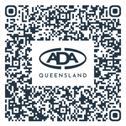


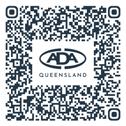

23 SUMMER 2021 COMMUNICATION 2021 CPD SURVEY RESULTS $1000 CPD VOUCHER WINNER DR WEBERT CHEN MOST POPULAR REQUESTED TOPICS HOW YOU WANT TO HEAR ABOUT OUR COURSES TOTAL RESPONSES 409 HAVE ATTENDED A CPD COURSE WITH ADAQ IN THE PAST 2 YEARS 81% PREFER TO ATTEND EVENTS FACE TO FACE 81% PREFER WEBINARS 18% 54% MORETON 4% BURNETT 6% WESTERN 21% CENTRAL 5% NORTHERN 6% PENINSULA 9% SUNSHINE COAST 8% GOLDCOAST RESPONDENTS WERE FROM SATURDAY IS THE PREFERRED DAY FOR COURSES REGIONAL MEMBERS WOULD LIKE HANDS-ON COURSES RUN LOCALLY With Toowoomba, Gold Coast, Sunshine Coast and Townsville being the most popular locations DIRECT RESTORATIVES TOP TIPS FOR PERIO IMPLANT RESTORATION DENTAL TRAUMA IN ADULT DENTITION VITAL PULP THERAPY ON DECIDUOUS TEETH OCCLUSION RETREATMENT OR EXTRACTION EMAILS DENTAL MIRROR COLLEAGUES INTERNET RESEARCH Extra-Oral Radiography and Cone Beam PreLicensing Course EMERITUS PROF PAUL MONSOUR 9 SCAN TO LEARN MORE Diagnosis and management of temporomandibular disorders NEW DR MAHMOUD BAKR & DR MOHAMMED MEER 30 SCAN TO LEARN MORE Relative AnalgesiaBundaberg PROF NIGEL ROBB 9 SCAN TO LEARN MORE Evening Bites: Endodontic Prognosis in the Implant Era NEW DR PAT CALDWELL 20 SCAN TO LEARN MORE Stage 1: Introduction to Oral Surgery A/PROF ANTHONY LYNHAM DR EDWARD HSU 22 SCAN TO LEARN MORE April ADAQ CPD CALENDAR FEB - MAY 2022 Stage 2: Intermediate Oral Surgery A/PROF ANTHONY LYNHAM DR EDWARD HSU 6 SCAN TO LEARN MORE Treatment Planning to Prevent Implant Complications DR KEITH DOONAN 11 SCAN TO LEARN MORE Stage 4: Oral Surgery - Cadaver Course NEW A/PROF ANTHONY LYNHAM & DR GREGORY PEEK 19 SCAN TO LEARN MORE Item Numbers, Health Funds and Records DR MARTIN WEBB & MS LARISSA ALDERTON 24 SCAN TO LEARN MORE May See all 2022 courses on adaq.org.au/cpd
GIVING A SMILE: VOLUNTEER DENTISTRY
The Volunteering in Dentistry Committee (ViDC) is ADAQ’s newest Committee, formed in March 2021 to connect volunteer dental professionals with organisations who provide oral health care for disadvantaged groups across Queensland.
This year, ViDC partnered with Australian Dental Health Foundation (ADHF) to provide new smiles to those in need. ADAQ sat down with Dr Norah Ayad to gain an insight on her volunteering experiences at the ADAQ Surgery and helping treat those in need.
HOW DID YOU FIRST GET INVOLVED IN VOLUNTEERING AT THE ADAQ SURGERY?
Being on the ADAQ Council, I heard about the Volunteering in Dentistry Committee, a passion project created by then ADAQ Junior Vice President, Dr Jay Hsing. ViDC was established to help connect dentists like myself, who want to volunteer, with the right organisations.
In the past, I found it challenging to get involved in dental volunteering because I wasn’t able to connect with the individuals in need, or have the ability to utilise my place of work to provide the services.
My role with the ADAQ Surgery so far, has been the dentist providing dental services and working alongside the team of dental assistants, sterilisation nurses and the ADHF team who work with local charities and not-for-profit organisations to identify patients with oral health needs.
WHAT DREW YOU TO VOLUNTEERING?
Healthcare is at its core “helping people”, and like many other dentists out there, one of the biggest reasons I got into dentistry was to be in a position to help people. We do this each and every day in our usual clinical work, but depending on our type of practice, we may not be exposed to those who require the most basic of oral healthcare.
I started volunteering at little bit through my student and new graduate stage. I enjoyed the change from private practice, where finances are a big barrier for people receiving dental care. Not having to have the discussion with the patient about how much certain treatment costs and instead really focus on providing the dental care was refreshing for me.
WHAT HAS YOUR VOLUNTEERING EXPERIENCE GIVEN YOU?
Volunteering has given me a lot of things over the years. It’s a good feeling and connects us to our community.
For me as a practitioner, it’s a challenge - a different environment, a different type of dentistry, a different type of patient base that I’m helping. You learn to challenge yourself to utilise the fundamental skills of being a dentist in different scenarios. There is a little bit of creativity that goes into it. Learning to apply dental skills in new ways – which is kind of cool.
I also love the mentoring aspect of volunteering. Often, I am
working with dental assistants or dental students, who are in the early part of their career. I can help pass on those fundamental skills of dentistry and encourage that connection to their community.
It’s given me a lot, as well as the opportunity to give back.
WHAT SORT OF DENTAL SERVICES ARE PROVIDED TO THE PATIENTS?
It really is a range of dental treatment from providing emergency care, to fundamental check-ups, cleans and some extractions and restorative work.
Volunteering is rewarding for both sides. It’s rewarding for us as individuals. But it is so rewarding to see the impact we’re making in the community.
Working at the ADAQ Surgery we are lucky to have access to a range of facilities, including a fully functioning dental chair, a sterilisation room, an x-ray system, and an intraoral camera, which allows volunteers a safe place to provide the dental care.
We also have dental materials donated by our sponsors and partnerships with TAFE’s prosthetics students to provide denture care and removable prostheses. This access really gives volunteers the opportunity to focus on providing the best treatment.
WHAT SORT OF CIRCUMSTANCES ARE THE PATIENTS TREATED IN?
It’s different depending on the support network we are working with. Generally, the patients we’ve seen have been from mostly homeless or domestic violence backgrounds.
Over the past few months, I’ve volunteered with ADHF, who offer support to domestic violence victims.
Often there is a better patient outcome when working with a support service that is in the process of providing care for the individuals, like shelter and safety. Then dentists can step in and provide them with dental treatment and take care of that aspect of their health.
WHAT WOULD YOU SAY TO SOMEBODY CONSIDERING DENTAL VOLUNTEERING?
Just do it! We’ve got the skills as dentists to provide the dental care. Put your hand up.
You can volunteer in a clinical role, or even a non-clinical role. You could help coordinate patient appointments, gathering medical histories and clinical data. It’s not just clinical dentistry, get involved any way you can. No one is going to turn a volunteer away.
If you’re thinking about volunteering, please reach out. It’s rewarding for both sides. It’s rewarding for us as individuals. But it is so rewarding to see the impact we’re making in the community.
HOW CAN DENTISTS GET INVOLVED IN VOLUNTEERING?
ADAQ provides a range of volunteering opportunities on their website, which is a good place to start. There you can find a list of recommended organisations that you can connect with to register as a volunteer.
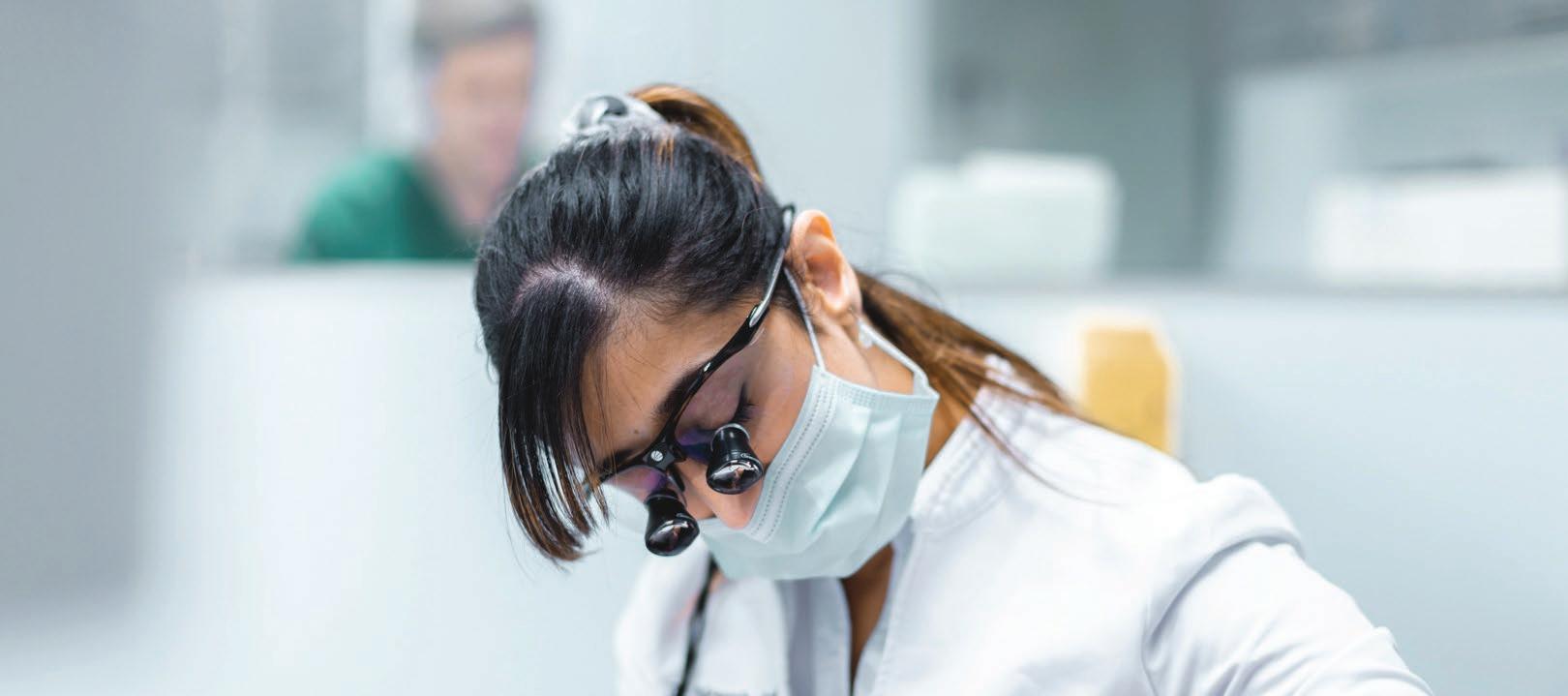
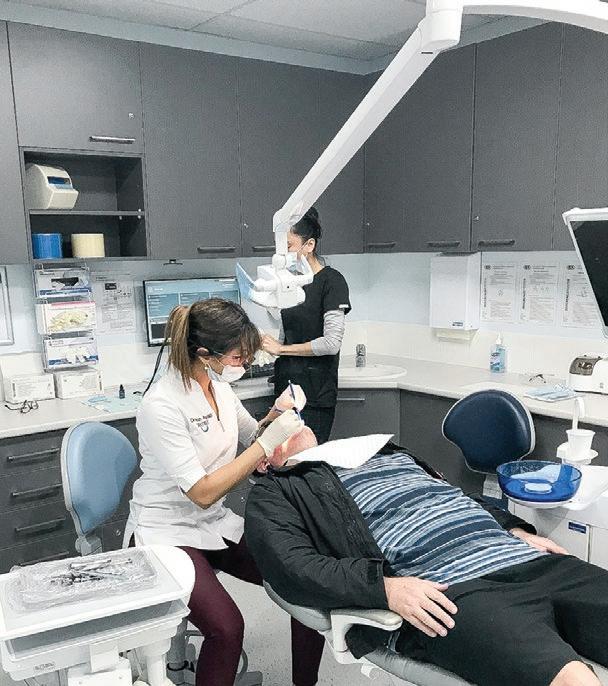
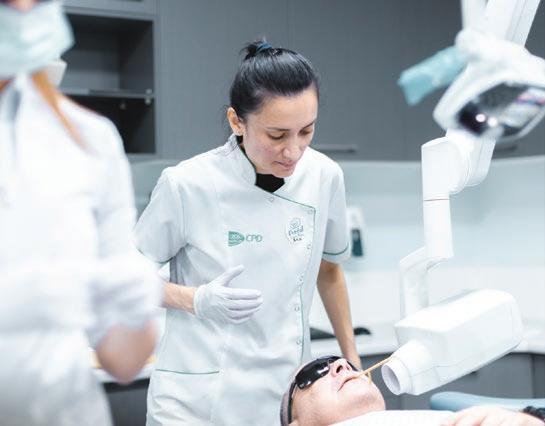
IF YOU KNOW OF A VOLUNTEERING ORGANISATION THAT WOULD LIKE TO PARTNER WITH ADAQ, PLEASE ASK THEM TO CONTACT THE VOLUNTEERING IN DENTISTRY COMMITTEE BY EMAILING EA@ADAQ.COM.AU.
IF YOU ARE INTERESTED IN VOLUNTEERING, FIND A PARTNERING ORGANISATION HERE AT WWW.ADAQ.ORG.AU/ VOLUNTEERING.
24 ADAQ DENTAL MIRROR SUMMER 2021
‘ROTTEN TEETH IN ORDER STRUNG’: ADVERTISING & THE ETHICAL DENTIST
ALESSANDRA BOI
ADAQ Dental History Preservation Committee
Restrictions became necessary in modern dentistry, to stem the activity of unscrupulous tooth pullers and to create a fair ground for the duly qualified and ethical dentists who advanced the professional standing of their field.
In the early days of quacks and barber-surgeons, Western dentistry was mainly extractions. A popular way to advertise dental work to illiterate customers was to hang pails of blood and teeth strung together:
His pole with pewter basons hung Black rotten teeth in order strung.
Rang’d cups, that in the window stood, Lin’d with red rags to look like blood.
John Gay, Fable 22. 1700s
The red and white bands of the barber pole still hint at these cups lined with red rags.
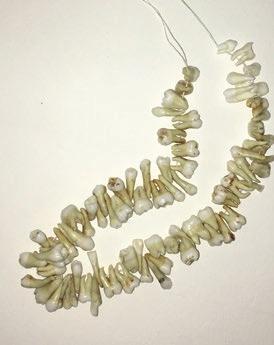
Image 1.
Tooth necklace, crafted of unwanted overcrowding third molars and other teeth. ADAQ Museum of Dentistry.
As late as the 19th century, dentists still displayed dentures, extracted teeth and their tools, such as tooth keys, to show their skills to prospective patients. In Queensland, dentistry remained unregulated until 1901, and anyone could claim to practice and promote their services. Painless and affordable tooth extraction through chloroform, ether and laughing gas was the main selling point.
DENTURES FOR SALE
With easily available anaesthetics and the advent of more affordable vulcanite dentures, unscrupulous practitioners would advertise the economic advantages of having all teeth removed and replaced by false teeth: Many Queenslanders were scammed into extractions of healthy teeth because wholesale extractions with vulcanite plates pay well (Odontological Society of Queensland minutes, ADAQ Archives).
The excavation of the North Brisbane Burial Grounds revealed many edentulous skulls (Morris KE and HF Akers, ‘VictorianEra Dentures in Brisbane, Australia’, Journal of the History of Dentistry, vol. 69, no. 2, 2021, pp. 74-93). The only treatment available to most was visiting the surgeon appointed to the Colonial Medical Service, or a meeting with a shady tooth extractor.
The first Brisbane-made dentures appeared around 1854. Dentures were often advertised as available for sale through mail order from London. In some cases, used denture plates were sold at discounted prices to the very poor.

Image 2.
Advertisements in Qld papers from London based practitioners.
As dentistry began to be recognised as a health profession in Britain, many qualified dentists, armed with the new Licence of Dental Surgery, bravely relocated to the antipodean colonies and set up private practice. They often travelled around the state, advertising in the local paper where and when they would be available for consultation, often the local hotel.
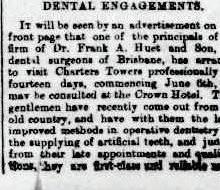
Image 3.
Dentists advertising.
Northern Miner (Charters Towers) Saturday 25 June 1892.
THE ETHICAL DENTIST DOES NOT ADVERTISE
Queensland’s Dental Act 1901 defined dentistry quite poorly, so dodgy tooth pullers continued their practices until the 1920s, perfectly legally, as long as they did not use the word: dentist.
The Odontological Society of Queensland fought bitterly against the shameful advertising of most extravagant and unethical claims by charlatans that stole their patients, and livelihoods. The fight took the shape of advocacy for regulation and recognised university qualifications. The other weapon was a Code of Ethics that heavily restricted advertising.
The minutes of the Society meetings show some lively debates about the ills and shames of advertising dental work. Supporters argued that advertisers were useful to patients who could not go to a dentist and pay ordinary fees. However, they were ostracised by those who found it unsafe, undignified, and immoral to advertise surgical procedures as commodities open for bartering.

Image 4.
Advertising was not unique to Australia. In the US, Edgar Parker changed his name to Painless to continue his shrewd business. Source: CC Wikipedia.
In 1912, the Council of the National Dental Association of Australia agreed on a Code of Ethics that clearly distinguished the ethical dental practitioners from the quacks still populating the streets.
According to this early Code, the dentist “shall not exhibit or permit the display in connection with his name or practice in any window, shop or show case open to public inspection, any dental specimen, appliance, apparatus or professional card.” Furthermore, “He shall not allow his name to appear on dentifrices, toothbrushes, or proprietary articles”.
UNFAIR ADVANTAGE
However, these ethical concerns weren’t directed to street tooth pullers alone. The 1936 draft text for the new ADAQ Code of Ethics mostly regulates advertisement to ensure a level playfield and no unfair advantages among the tight-knit group of member practitioners, many of whom resided in the areas and competed for the same pool of patients.
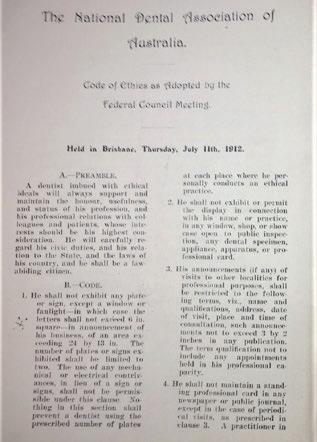
Image 5. NDA Code of Ethics 1912. ADAQ Archives

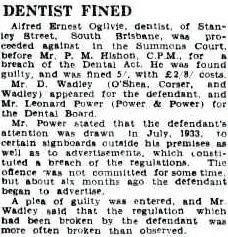
Image 6. British example of circulars the Australian dentists despised. Source: Wellcome museum, image: CC Wikipedia
Image 7. Dentists were regularly fined for breaches. Source: State Library of Australia.
The allowed signage for the premises was heavily regulated. Moreover: Any announcements by way of public hoardings, Theatre and Picture theatre screens (…), dodgers and circulars must be avoided.
With such strict restrictions, even the most prominent Queensland practitioners looked for ways to circumvent them, such as using the social pages rather than classifieds.
Today, while unfair and unprofessional competition remains, the emphasis is on the importance of not being misleading or deceptive for the benefit of the prospective patients’ health and wellbeing.
26 27 ADAQ DENTAL MIRROR SUMMER 2021
MEMBER SPOTLIGHT: SMART SOFTWARE FILLING IN THE GAPS
3D scanning software system with a big future in forensic odontology has been engineered by twin brothers studying dentistry at the University of Queensland.
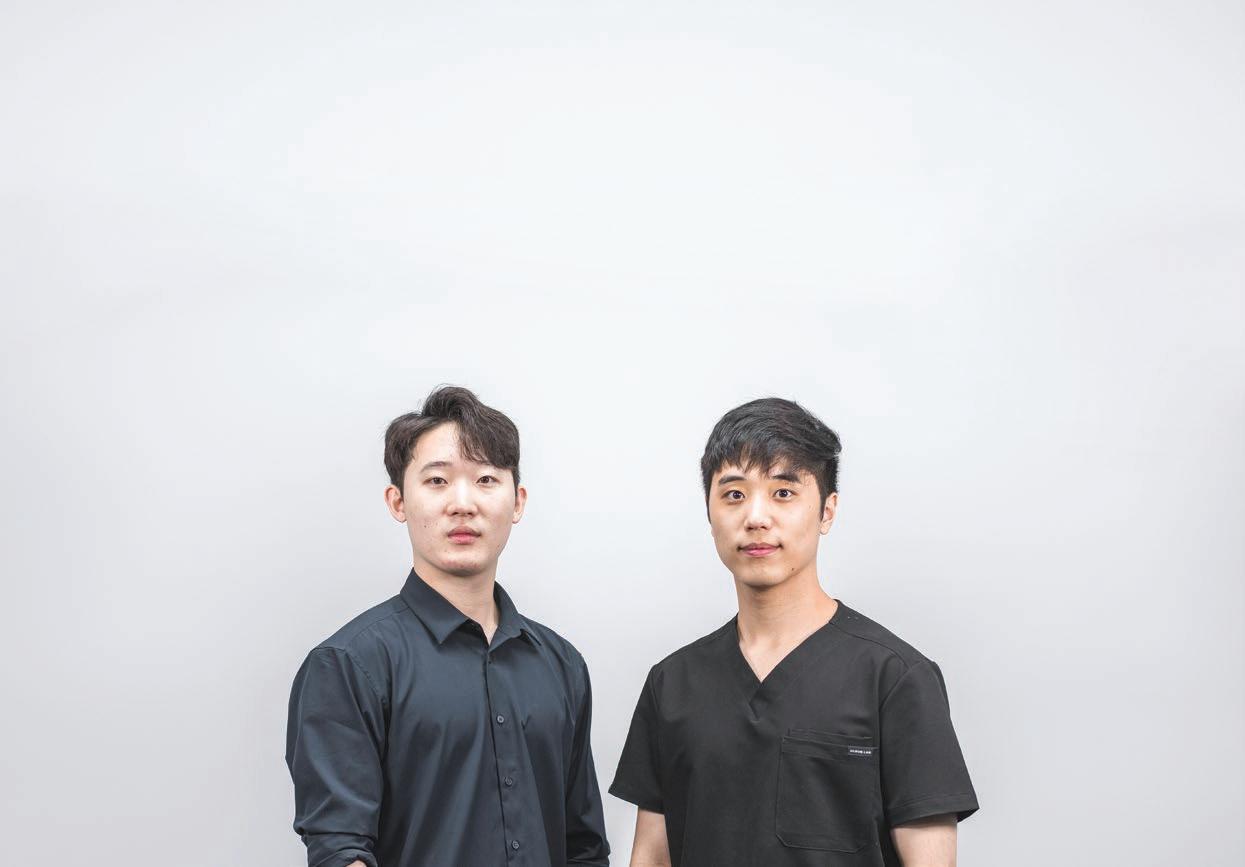
Dental technology is an ever-evolving system, shaping and transforming the dental field with each new program and device. Innovation is desired and required to continue improving the system. Adding a twist are twin brothers Sean and Ryan Choi, who with the mentoring of Professor Ove Peters and Associate Professor Alex Forrest AO, may have continued the next evolution in forensic dentistry with their university project.
It started after pre-clinics when the brothers introduced themselves to University of Queensland Professor of Endodontics, Ove Peters, who was at the time looking for techsavvy students to get involved in a research project. Professor Peters mentioned that endodontics could be challenging for even the most experienced endodontists, and that he was looking for a way technology could assist in complex cases.
Having completed coding courses in high school the brothers brushed up on their programming skills and started altering existing programs, unlocking new abilities. They were able to create a 3D superimposition software that provides live feedback to help guide the clinician’s work.
The software does two things – first, it analyses and automatically aligns two 3D models – one of them could be a tooth being prepared, while the other could be the ideal final preparation. Next, it compares and highlights the differences between the two models using a colour-map. Following this guide, clinicians can reduce errors, improve accuracy, and have more assistance for complex cases.
Even if the recovered dental impressions are significantly damaged, the smart software could fill in the gaps by predicting the original tooth structure.’
The entire process can be run on everyday computers and is relatively quick, and best of all is completely automatic – as easy as the click of a button.
Encouraged to showcase their work, the Choi brothers and Professor Peters presented the software at research meeting at the UQ School of Dentistry. In attendance was ADAQ President, Associate Professor Alex Forrest AO, who saw a potential use for the program in the field of forensic odontology.
Up until that stage, the software had been used to assess plastic teeth models prepared by other dental students. A/Prof Forrest had another idea. He introduced himself to the brothers and discussed his background in forensics and shared a commonly occurring issue.
Often in victim identification, the dental impressions or CT scans taken from a deceased person would not be fully intact or easily identifiable against pre-existing dental records.

With this technology however, when a 3D model is part of the dental records, it can be compared against a 3D model of the teeth of the deceased person to help establish a match.
Even if the recovered dental impressions are significantly damaged, the smart software could fill in the gaps by predicting the original tooth structure.
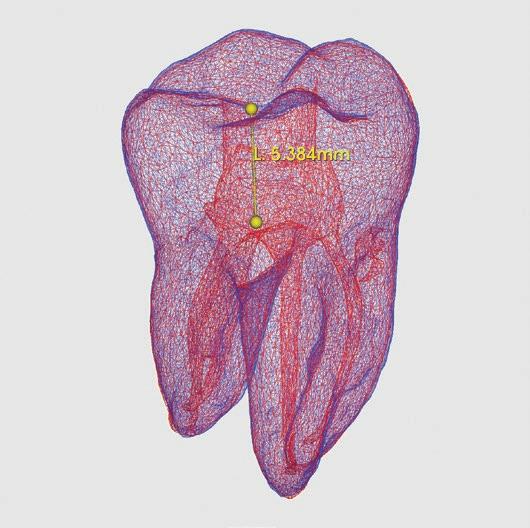
Image 2.
Immediately the brothers were intrigued. Neither had considered their program being used in forensic dentistry but could see the meaningful impact it would make in the field.
While similar technology exists, it is costly and time-consuming.
With further funding and support the brothers want to make this custom software free , in hopes that it will be accessible to by forensic odontologists around the world.
With further funding and support the brothers want to make this custom software free, in hopes that it will be accessible to by forensic odontologists around the world, without financial burden.
Ryan and Sean want to help people. Both chose dentistry to make a positive impact. After they’ve completed their degrees, they each plan to explore research, technology, and community leadership roles and seek fulfilment in supporting the industry and community.
With their flair for dental technology, the potential is endless.
“It is really gratifying for an educator to see one’s students excel and thrive,” says Professor Peters. “The Choi brothers, while twins each have different skill sets, have both impressed me from the start of our project with professionalism, quick wits and positive attitude.”
“When we had problems with the interface,” Professor Peters continues, “what I heard was, ‘no worries, Prof. It’ s just a line of code; we can do that.”
“The Choi brothers are exceptional, gifted individuals who see solutions instead of problems,” says A/Prof Alex Forrest AO. “Their careers will be a pleasure to watch.”
29 SUMMER 2021
A detailed 3D visualisation of a molar from Ryan and Sean Choi’s superimposition software
Image 1.
L-R: Sean Choi, Prof. Ove Peters, Ryan Choi at University of Queensland
VICTORIA TRINH
5TH YEAR DENTAL STUDENT AT GRIFFITH UNIVERSITY
GRADUATING 2021
MEMBER SPOTLIGHT EARLY CAREER DENTISTS

WHAT TYPE OF WORK DO YOU WANT TO DO ONCE YOU GRADUATE?
At this point in time, I enjoy general dentistry, in particular oral surgery. In the first two years after graduation, I plan to work more as a general dentist and explore the industry to have more primary experience with the different aspects of Dentistry. In the future, I may potentially undertake further training and perhaps specialise.
WHY DID YOU CHOOSE TO PURSUE DENTISTRY?
When I first got my offer, I was very lucky to have some great exposure to the industry. I had the honour of shadowing Dr Han Choi, a maxillofacial surgeon in New Zealand who was a great impact on my pathway to Dentistry. Dr Choi, having done both Medicine and Dentistry, explained the pros and cons of each degree and offered insights on different aspects of Dentistry.
Furthermore, in my first year of university I had the privilege to work with Dr Lincoln Huang in Sydney. Dr Huang works in many different aspects of Dentistry, ranging from orthodontics, sleep apnoea treatments to laser therapy.
WHAT DO YOU ENJOY MOST ABOUT STUDYING DENTISTRY?
I find Dentistry a very rewarding hands-on profession. There are a variety of approaches, treatments, and vast wealth of knowledge to discover. I feel proud, rewarded, and happy when my patients exclaimed “I love the front fillings,” “I can smile again,” and “I can finally eat without pain or discomfort.”
ANY TIPS FOR STUDENTS STARTING THEIR DENTAL SCHOOL JOURNEY?
1. Have your non-negotiables. My four non-negotiables are adequate sleep, healthy food, exercise, and rest. I find that not only in dental school but in your career, you need a work life balance. If you work too hard and have no down time your body will burn out!
2. Allocate time for an interest outside of dentistry. So much of our time is dedicated to study and honing our skills. Give yourself a break and enjoy something that is just for you. Even playing Nintendo Switch!
3. Have your support network. Appreciate and keep your close friends and family around you. I am very grateful to have a strong support network of friends and family.
PHILIP CHIEN
GRADUATED 2017 BACHELOR
DENTAL SCIENCE (HONS) FROM THE UNIVERSITY OF QUEENSLAND

WHAT ARE YOU DOING NOW THAT YOU’VE GRADUATED?
I am currently a general dentist working in a busy private practice in Narangba. I am also studying a Master of Philosophy (MPhil) in Endodontic research at UQ with Professor Ove Peters and Emeritus Professor Laurence Walsh.
WHY DID YOU CHOOSE TO PURSUE DENTISTRY?
Dentistry is rather generational in my family – both my paternal grandparents were first generation dentists in Taiwan. I grew up visiting my family home which was essentially a dental clinic on the first floor, and private residence in the second and third floors. That exposure to dentistry became very formative for me. A few of my uncles and cousins are dentists as well, and I enjoyed watching them work and seeing what they did.
WHAT ARE YOUR FUTURE CAREER PLANS?
I currently practise the full scope of general dentistry with a special interest in endodontics and minor oral surgery. I am hoping to have a good balance of both clinical practice and clinical research in my career.
ANY ADVICE FOR STUDENTS WHO WANT TO SUCCEED IN DENTAL SCHOOL?
1. Be involved in the dental community. Talk to your peers, lecturers, supervisors and mentors. Your colleagues and mentors will form your support network in both university and your career. Join study groups and professional dental bodies and remember to give back when you can.
2. Study hard. Be mindful that the study you do directly corresponds to the ability of care you can provide to your patients. You could be presented a case study in a morning lecture and see the same thing in a patient that afternoon.
3. Always remember that you are in a profession of service. Patients have come to you (often in a time of need) for your expert opinion, counsel, and treatment in an intimate area of their body.
ADAQ AWARDS RECIPIENTS: AWARDED AT THE 2021 ANNUAL GENERAL MEETING
LIFE MEMBERSHIP
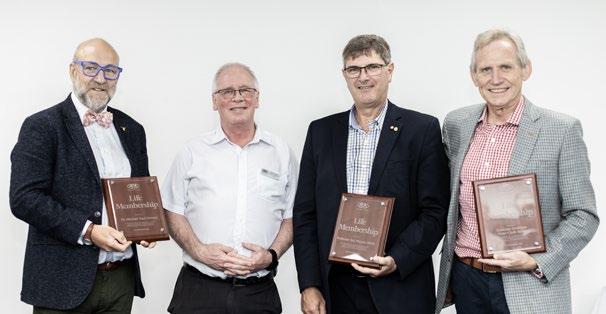
L-R: Dr Michael Paul Renner, ADAQ President A/Prof Alex Forrest AO, Prof Ian Meyers OAM, A/Prof Peter Clark Ryan
In recognition of exceptionally distinguished service to ADAQ and to the profession of dentistry.
PROF IAN MEYERS OAM DR MICHAEL PAUL RENNER
SERVICE MEDALLION

In recognition of valuable service to the Association or to the dental profession for a substantial period.
DR NORAH AYAD DR ADRIAN FRICK
A/PROF PETER CLARK RYAN
ADA VALUABLE SERVICE AWARD
In recognition of valuable service to the ADA or to dentistry at a national level.
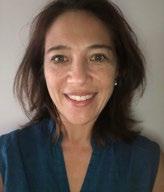
DR SOM-LING LEUNG
HONOURARY MEMBERSHIP

L-R: Prof. Alexander Moule, ADAQ President A/Prof Alex Forrest AO
In recognition of honourable or substantial service to the dental profession, in any part of the world and in any of the sciences allied to dentistry.
PROF ALEXANDER MOULE
30 31 ADAQ DENTAL MIRROR SUMMER 2021
ADVERTORIAL
SET YOUR PRACTICE UP FOR A SUCCESSFUL NEW YEAR
Current Government incentives could make it the perfect time to purchase new equipment for your practice and start the year with your best foot forward.
The past 18 months have been focussed on dealing with COVID-19. Now, as we begin to move into a post-COVID ‘normal’, many dentists have found that they are busier than ever.
“The healthcare and dental markets have bounced back faster than almost any other industry in Australia,” says Tim Bowring, Head of Partnerships at BOQ Specialist. “After various closure periods, there is now a built-up demand for dental services as practices have reopened and resumed normal operations.”
With this increased demand as well as some excellent Government incentives available, now could be the perfect time to buy or upgrade equipment for the new year ahead.
TAX INCENTIVES
While it might seem counter-intuitive to consider new equipment when your practice is so busy, now could be an excellent time to look at upgrading equipment, refreshing fit-outs and refurbishing other parts of the practice. The Federal Government is providing attractive incentives through their temporary full expensing scheme which enables business owners to purchase equipment and instantly write it off for tax purposes in the same financial year, rather than depreciating over a number of years, up until 30 June 2023. “The end date for that incentive means you have ample opportunity to consider your equipment purchases and ensure you get your required upgrades in place in time,” says Tim.
OPPORTUNITY TO UPDATE
During the peak of the pandemic, dental professionals took advantage of the Government stimulus package and cash boosters to keep their practices afloat. When lockdowns eased and business was able to resume, many practices found that
they were more profitable than they were previously.
“If this is the case for you, now could be an opportunity to consider investing in your practice and gain the resulting tax and cash-flow efficiencies,” says Tim.” One possible and timely strategy here is to invest in upgrading your practice.
“We have a number of different promotions with equipment suppliers where, for example, there may be an offer of 12 months with no interest and no repayments on a piece of equipment,” says Tim. “Combining these offers with the temporary full expensing incentive means practitioners can get their practice up and running with brand new equipment, to increase efficiency and generate cash-flow – all while they writeoff those assets and make no repayments for 12 months.”
FAST AND EFFICIENT
While some practitioners choose to run equipment until the end of its life, that’s usually a false economy. Just from an operations viewpoint, getting new and better equipment means that they’re going to work more effectively and efficiently. Not only does this improve productivity of the practice, it can also increase profitability too.
“Right now, the current temporary tax incentives can really work in the practice owner’s favour,” says Tim. “Once we reach the cut-off date in 2023, any assets purchased after then must be depreciated over the life of that asset. Assets purchased and installed beforehand can be 100 per cent written off straight away.”
FIT-OUT OR REFURBISH
Not only could it be a great time to purchase new equipment, but it also could be a perfect opportunity to do a complete refurbishment and fit-out of a practice. Of course, such a decision should be carefully considered and discussed with an accountant or financial advisor, but if deemed appropriate, the timing can work to your advantage.
“Under the temporary full expensing scheme, every individual qualifying asset can be claimed – there is no cap on the value or number of assets,” says Tim. “If you are fitting out a practice, you can write off the cost of the fit-out upfront. That’s an instant tax write-off.”
A NEW YEAR AHEAD
As 2021 comes to a close, it’s time to start thinking about the new year ahead and how to best set yourself up for success.
“We always tell our clients that the first step is to talk to their accountant,” says Tim. “They will give you sound financial advice and direction. Our financial specialists can then provide information about the different financial options available to you. We also have a number of relationships with trusted industry partners who can supply any equipment that’s required.”
The simple fact is that BOQ Specialist has supported the dental industry for over 30 years. Tim says, “BOQ Specialist’s deep understanding of the industry has really allowed us to develop a product suite that is tailored to the needs of our clients so we are well positioned to help with all their financial needs.”
To find out more ways we can help you start afresh this new year, contact one of our financial specialists today on 1300 160 160 or visit our website at BOQSPECIALIST.COM.AU/EOY

Congratulations to the 2021 BOQ Specialist Bursary Recipients
The issuer and credit provider of these products and services is BOQ Specialist – a division of Bank of Queensland Limited ABN 32 009 656 740 AFSL and Australian credit licence no. 244616 (“BOQ Specialist”). Terms, conditions, fees, charges, eligibility and lending criteria apply. Any information is of a general nature only. We have not taken into account your objectives, financial situation, or needs when preparing it. Before acting on this information, you should consider if it is appropriate for your situation. BOQ Specialist is not offering financial, tax or legal advice. You should obtain independent financial, tax and legal advice as appropriate
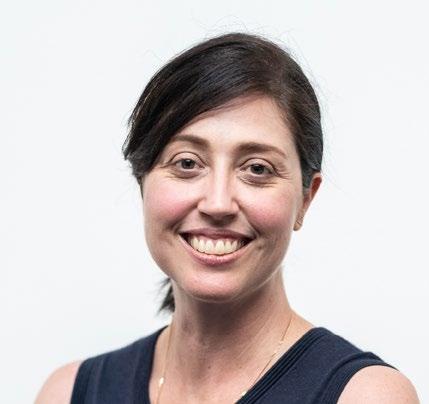
“This bursary will allow me to prioritise my career, I can now build strong foundations by extending my knowledge and clinical skills, without having the stress of also worrying about other financial commitments.”
ADAQ partners with BOQ Specialist to award these CPD bursaries, worth $5500 each, to exemplary dental professionals who are passionate about advancing the oral health of Queenslanders and committed to learning and development. DR
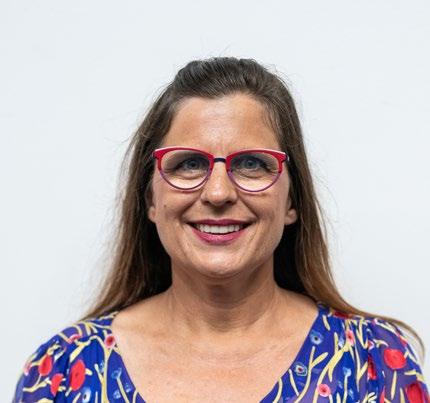
“This bursary gives me the freedom to explore areas of dentistry that I am interested in. It will also allow me to support my staff’s training and development needs, which will have a positive impact upon the practice.”
32 33 ADAQ DENTAL MIRROR SUMMER 2021
LYNDA RICHARDSON BOQ
Emerging Practitioner Bursary DR KYLIE PEARCE BOQ Specialist Practice Bursary
Specialist
ADVERTORIAL
THE TAX OFFICE VIEW ON CHRISTMAS LUNCH AND EMPLOYEE GIFTS
There are two factors to consider when planning your end of year staff function. They are whether the expense will be tax deductible and/or subject to fringe benefits tax.
Fringe benefits tax (FBT) may apply whenever an employee or associate receives a benefit (generally non-cash) that is in addition to their paid salary/wage. Previously known as perks, they would include private use of company car, fully paid travel, corporate boxes, tickets to the theatre etc. This all started back in 1986 where restaurant meals were considered to be a benefit for employees rather than a legitimate cost of doing business. If the expense is subject to FBT then the employer will need to pay tax on the value of the benefit at the highest marginal tax rate which is currently 47%. Your ability to claim a tax deduction for Christmas lunch or gifts depends largely on how it is treated for FBT.
The cost of providing a Christmas party whether it is on your premises or at a restaurant is exempt from FBT provided that the cost per employee or associate is less than $300. The bad news is that the costs for the Christmas party are not tax deductible because the nature of the benefit is considered to be entertainment and as a FBT exemption applies then no income tax deduction is available.
Your ability to claim a tax deduction for Christmas lunch or gifts depends largely on how it is treated for FBT
The cost of providing staff with Christmas gifts are tax-deductible where the gift has a value of less than $300 provided that they are classified as non-entertainment gifts. Items such as gift cards, vouchers, hampers are all classified as non-entertainment. Tickets to the movies, a sporting event or an evening dinner would constitute an entertainment gift. Where the gift is under $300 and non-entertainment then there is a FBT exemption under the “minor and infrequent benefit” rules.
The business is able to claim GST on any expenses that are considered tax deductible and have GST shown on the tax invoice. There is no GST on gift cards and vouchers.
Back to the Grinch-like decision by the ATO that denies a tax deduction for Christmas parties. The reason that the costs are not tax deductible is because food and drink are being provided in a social setting that constitutes entertainment. There are a
number of factors to consider to determine whether the event constitutes entertainment. The ATO advises that providing refreshments to enable employees to complete the working day in comfort is not generally entertainment but that the more elaborate a meal is, the more likely it is that entertainment arises from eating that meal. Food and drink provided at the business premises is less likely to be considered entertainment compared with a meal provided at a restaurant and also food or drink provided during work time or over time is less likely to be considered entertainment. It is reasonable to presume that a meeting during working hours on the business premises where food and drink were provided that also incorporated a reasonably lengthy discussion/presentation on business planning for the next year might not be considered entertainment.
Simply put, gifts under $300 are tax-deductible and not subject to FBT whilst Christmas lunches under $300 p.p. are not taxdeductible and not subject to FBT. As everybody’s circumstances can be slightly different you should always seek professional advice.
ABOUT THE AUTHOR

ALBERT GIGL
Albert Gigl is the founder of MW Partners, Specialist Dental Accountants. Over 35 years as a Chartered Accountant, Albert has spent the last 15 years specialising in providing taxation advice for dentists. Contact Albert on 07 5554 6400 or albert@ mwpartners.com.au for an obligation free consultation.

34 ADAQ DENTAL MIRROR
OBITUARY OF DR ROM DENHAM
DR GARY SMITH
It is not an easy task to sum up a life in one page. This is especially so when one is speaking of the life of Dr. Romuald D. Denham.
However, Rom, as he was always known, can easily be described as a handsome gentle man. He was the epitomy of style. In December 1978 he was elected President of the Queensland Branch of the Australian Dental Association.
Rom was born in Brisbane in 1934 and grew up in the suburb of Sherwood. He attended St Joseph’s Convent at Corinda. After a period at Pius XII Seminary in Banyo, he completed his schooling at St Joseph’s College, Gregory Terrace. He was a successful scholar and outstanding sportsman in his school-days, making the 1st fifteen, the 1st eleven and was the captain of athletics.
On leaving school he studied dentistry at the University of Queensland and graduated in 1957 when he took up the post of Dentist for the Royal Flying Doctor Service in Cloncurry. He served in this capacity in 1957-1958.
In mid-1958 he married Maureen Chapman whom he met whilst he was studying dentistry. From 1958 to 1965 the Denham’s moved to London where Rom had a busy private practice in Walthamstow. It was in these years that he laid the foundation for his excellent golf swing.
They returned to Brisbane with four children in 1965 and set up home in East Brisbane where they were subsequently joined by three more children. Rom worked for Dr Tony Medland for about 12 months and then joined Dr Ron Thurecht in his practice in the bayside suburbs of Wynnum and Manly in 1968. This partnership lasted 35 years. He joined the Cadmus Society in the same year and was its President in 1972.
His interest in general anaesthesia and sedation methods in dentistry led him into the Australian Society for the Advancement of Anaesthesia and Sedation in Dentistry (ASAASD) on its formation in the State. A well known lecturer on the Society’s courses; he eloquently and effectively preached the gospel of Relative Analgesia. Further evidence of his interest in this sphere of dentistry were his articles published in the Society’s journal and his presidency of the Queensland Branch of ASAASD in 19751976.
Periodontology was another of Rom’s particular interests. He was an active Member of the Queensland Branch of the Australian Society of Periodontology and was the Queensland Branch President in 1975 - 1976. From 1974 - 1978 he was a member of the part-time staff in the sub-department of periodontology at the University of Queensland Dental School.
Rom joined the Council of our Association in 1976, serving
as Convenor of the Dental Health Education Committee and Convenor of the Dental Health Week Committee. He moved quickly to become ADAQ Vice-President in 1978 and President a year later which ironically as a parent with seven children, was the International Year of the Child. ADAQ was fortunate to have Rom Denham.
In retirement he and Maureen returned to England for a couple of years. They enjoyed travel and each year after that they would head off on another hiking adventure. On behalf of ADAQ I would like to extend our deepest condolences to Maureen, Rom’s wonderful wife for 63 years and to their children and grand children.
In the eulogy, Genevieve, Rom and Maureen’s youngest child, said, “Rom had wonderful traits of perfectionism, high expectations of himself and giving to others. We will remember him for his philosophy: Love those around you, be honourable, be kind. Smile and it will show through your voice”.
I can vouch that Rom always smiled.
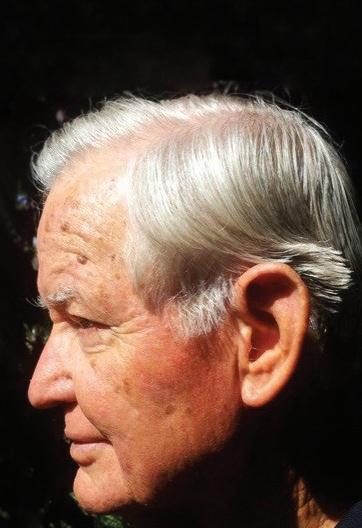
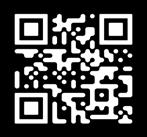
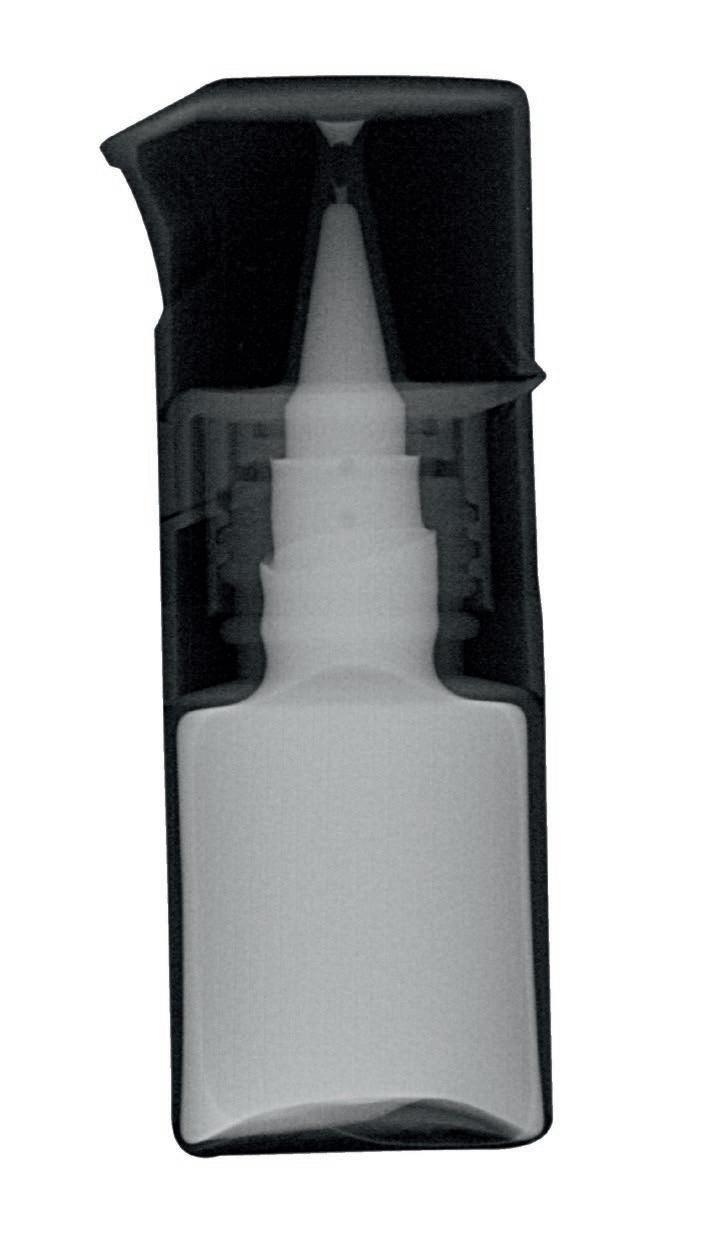
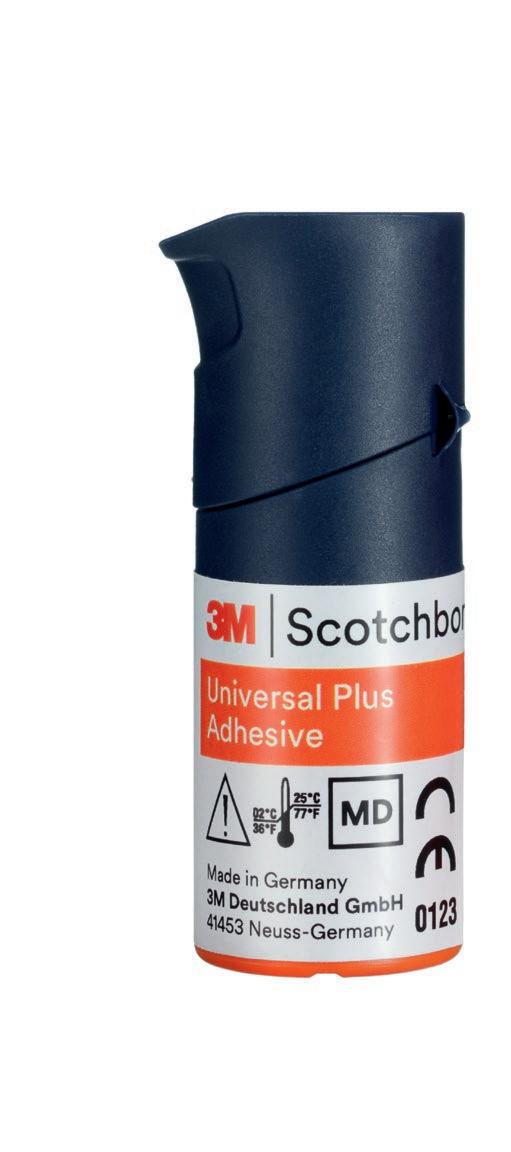
36 37 ADAQ DENTAL MIRROR SUMMER 2021
3M and Scotchbond are trademarks of 3M Company or 3M Deutschland GmbH. © 3M 2021. All rights reserved. 3M Australia Pty Limited Building A, 1 Rivett Road, North Ryde, NSW 2113 1300 363 454 | 3M.com.au 3M New Zealand Limited 94 Apollo Drive, Rosedale, Auckland 0632 0800 808 182 3M.co.nz FLAME_3M5939 11/20 The original, now better than ever! 3M™ Scotchbond™ Universal Plus Adhesive 3M™ Scotchbond™ Universal Plus Adhesive takes universal adhesives to the next level. Introducing the first radiopaque universal adhesive. All the benefits of the original 3M™ Scotchbond™ Universal Adhesive. Plus even greater control and predictability. 3M Oral Care 3M.com.au/ScotchbondPlus
CLASSIFIEDS
Stay informed of opportunities and announcements exclusive to the ADAQ community
MARKING 45 YEARS OF DENTISTRY UTILIZING GENERAL ANAESTHESIA IN BRISBANE
Dr Anthony Speed, in association with anaesthetists from the Wesley Anaesthetic Group, wishes to advise that they can facilitate treatment for patients requiring general anaesthesia in our outpatient facility at Holland Park. This is particularly useful for patients who have no private hospital insurance. With an extensive range of experience, the team is willing to undertake wisdom tooth removal, implant placement and perform routine restorative dentistry on all age groups including children aged 3 and above. Anxiety sufferers, local anaesthetic problems, severe gag reflex sufferers, special needs patients, and dementia sufferers have all been successfully treated over the years. Additionally, we are now able to offer Cerec single visit crowns so that the patient does not have to return for subsequent cementation. Patients who are medically compromised can be treated at St Andrew’s private hospital by arrangement.
CONTACT
If this service can be of assistance to some of your patients, please phone the reception staff on 3397 1339 for further information. Referral booklets available on request

SPECIALIST MAXILLOFACIAL ORAL SURGEON MELBOURNE
We are seeking an experienced Maxillofacial Oral Surgeon to join our practice with a long-standing reputation for clinical excellence. Due to the departure of one of our long-term Surgeons an opportunity has arisen to take over a strong referrer base, working 3 to 4 days per week consisting of in-chair treatment, and hospital GA days.
With exceptional earnings, an attractive relocation package and an equity opportunity for the right person this position will be of interest to a driven surgeon wishing to grow their career and providing exceptional patient care. We will consider FIFO arrangements also.
THE OPPORTUNITY
Our Clinic has two surgeries and two consulting rooms, scribe support, and a full team compliment to ensure your success.
DUTIES
• Dentoalveolar Surgery - Third molar surgery, simple and
complex extractions, implant placement, exposure;
• Reconstructive Surgery - Bone Grafting, Sinus Lift;
• Oral Pathology - benign and malignant tumours of the face, jaws, head and neck;
• Trauma;
• Surgical and non-surgical management of TMJ disorders;
• Orthognathic Surgery.
CONTACT
For further information or to have a confidential conversation please contact Kelli Hughes on M: 0417770955 or email hr@maxfacclinic.com.au for an immediate response.
USED A-DEC 500 DENTAL CHAIRS FOR SALE
Setting up a new practice or replacing an old chair? Queensland Dental Services (QDS) has good, regularly serviced, used A-dec 500 dental chairs, at one third the price of new ones. QDS is a dealer for Acteon, W&H, Carestream X-ray and CBCT, NSK, Cattani, and Stern Weber. Contact Brian Gardiner on 0488 072 332 (briang@qds.net.au) for assistance setting up a new surgery, or if you are purchasing a new A-dec 500 dental chair, QDS can make it happen. QDS will install and service your new A-dec equipment, repair your NSK or W&H handpieces (in Brisbane), and perform X-ray Compliance and Validation of your W&H Lisa sterilisers, all at competitive prices.
CONTACT
Phone Brian now on 0488 072 332 to secure your new (used) A-dec equipment.
TOOWOOMBA DENTAL SPECIALISTS ARE SEEKING AN ADDITIONAL PERIODONTIST TO JOIN OUR TEAM.
Ideally this could be an established periodontal practice seeking to expand with a branch practice in Toowoomba or someone seeking regular full clinical days in the garden city. Currently we are a team of two Prosthodontists, one periodontist a pediatric dentist with general dentists in support and we are struggling to keep up with demand. Our aim is to provide high quality treatment in the Darling Downs area. For more information contact florian@ toowoombadentalspecialist.com.au

FULL-TIME DENTIST
Generous Remuneration
ADAQ Office Closure
The ADAQ Office will be closed from 12pm 24 December 2021. We will reopen at 8:30am on 4 January 2022. We hope you have a wonderful holiday season.
We are seeking a full-time dentist to join our busy practice in Albany, a scenic city on the south coast of Western Australia with a population of approximately 34,000. Albany boasts beautiful beaches and hiking trails and is only around 400kms south-east of Western Australia’s capital, Perth. To find out more about our practice visit our website at albanydentalcentre.com. au or email Janine at practice2@albanydentalcentre.com.au
OPEN YOUR OWN PRACTICE OR RELOCATE.
FOR LEASE commercial premises previously established as a dental clinic for last 60 years.
Floor area approx. 100sq.m. Prominent location on main street of busy seaside shopping/business precinct. Developing area of highrise residential units. Waterfront position overlooking Moreton Bay and Redcliffe Jetty.
Also suit allied health or professional rooms.
Phone Owner 0481907944
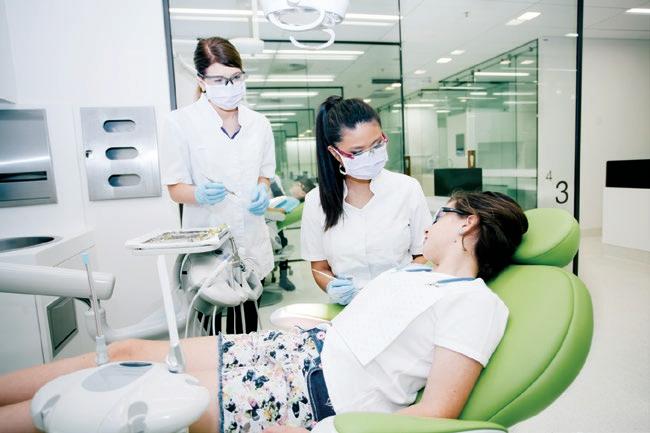
PRACTICE SPACE FOR LEASE
Established approx. 15year, this recently closed practice is now available for lease, premises is filled with light and has two spacious surgeries with all drainage traps, floor coverings and shielding no Chairs. Area still growing i.e. New units and townhouses being developed. It is located on the main road amongst other professional and retailers businesses. Visible signage advertises the practice, with pedestrian and busy vehicular traffic. There is ample parking for patients at the rear of the premises.
Contact Iggi Kalatzis on 0413700655 or iggikal@bigpond.com
PART-TIME POSITION AVAILABLE FOR AN ENTHUSIASTIC DENTIST
All aspects of Dentistry performed except for complex orthodontic and surgical extractions. Principle Dentist happy to mentor. Practice based at Camp Hill.
Call today (0408) 782 782
Study Orofacial Pain at The University of Sydney

This new pathway is designed for dentists and other interested health professionals working with patients with orofacial pain problems.
Covering core concepts in pain management and specific orofacial pain conditions (including Temporomandibular Disorders and Orofacial Neuropathic Pain) it is the only study option devoted exclusively to Orofacial Pain offered by an Australian or New Zealand University.
(Note: Semester 1 entry only each year)
Key features of the course
• Clinically-focused and flexible online study program
• Content developed by leading experts in the field
• Interactive discussions and written assignments
• Internationally recognised Masters degree program
For dates & further information visit: sydney.edu.au/medicine/pmri/education
T: +61 2 9463 1516
E paineducation@sydney.edu.au
38 ADAQ DENTAL MIRROR
A great rate. A fresh start.

Upgrade your equipment or fit-out with fixed rates from 2.49% p.a.*^
With the end of 2021 fast approaching, we’re all feeling ready for a fresh start. At BOQ Specialist, we want to ensure that you and your practice finish the year with your best foot forward and are ready to kickstart 2022.
That’s why, we’re offering fixed interest rates from 2.49% p.a. for four years and 2.59% p.a. for five years on new equipment and fit-out purchases financed with us before 31 January 2022.*^
With Government support and rates as low as these, there’s never been a better time to upgrade your equipment or fit-out and set your practice up for the new year ahead.
Visit us at boqspecialist.com.au/eoy or speak to your local finance specialist on 1300 160 160
BOQ Specialist. The bank for dental professionals
*Subject to credit approval. The issuer of these products and services is BOQ Specialist - a division of Bank of Queensland Limited ABN 32 009 656 740 AFSL and Australian Credit Licence no. 244616 (“BOQ Specialist”). Terms and conditions, fees and charges and lending and eligibility criteria apply. Any information is of a general nature only. We have not taken into account your objectives, financial situation, or needs when preparing it. Before acting on this information you should consider if it is appropriate for your situation. You should obtain and consider the relevant terms and conditions from boqspecialist.com.au before making any decision about whether to acquire the product. BOQ Specialist is not offering financial, tax or legal advice. You should obtain independent financial, tax and legal advice as appropriate. We reserve the right to cease offering these products at any time without notice.
^Equipment or fit-out purchase must be financed via a chattel mortgage with fixed terms equal to or greater than 48 months. The above fixed interest rates are only available for loans under the SME Recovery Loan Scheme. For loans outside of the Scheme, an additional 0.30% above the above fixed interest rates applies. Signed loan documentation must be received by 31 December 2021, with settlement completed by 31 January 2022. Not available for leases, rental purchases, internal refinances, escrows, residual/ balloon refinances, residential or commercial property and goodwill loans. A full documentation fee of $495 applies. This offer expires on 31 January 2022 and is subject to change without notice at the discretion of BOQ Specialist. This offer cannot be taken in conjunction with or in addition to any other packages, negotiated interest rates or
special
Information
offers.
is current as at 1 November 2021.



























































































































